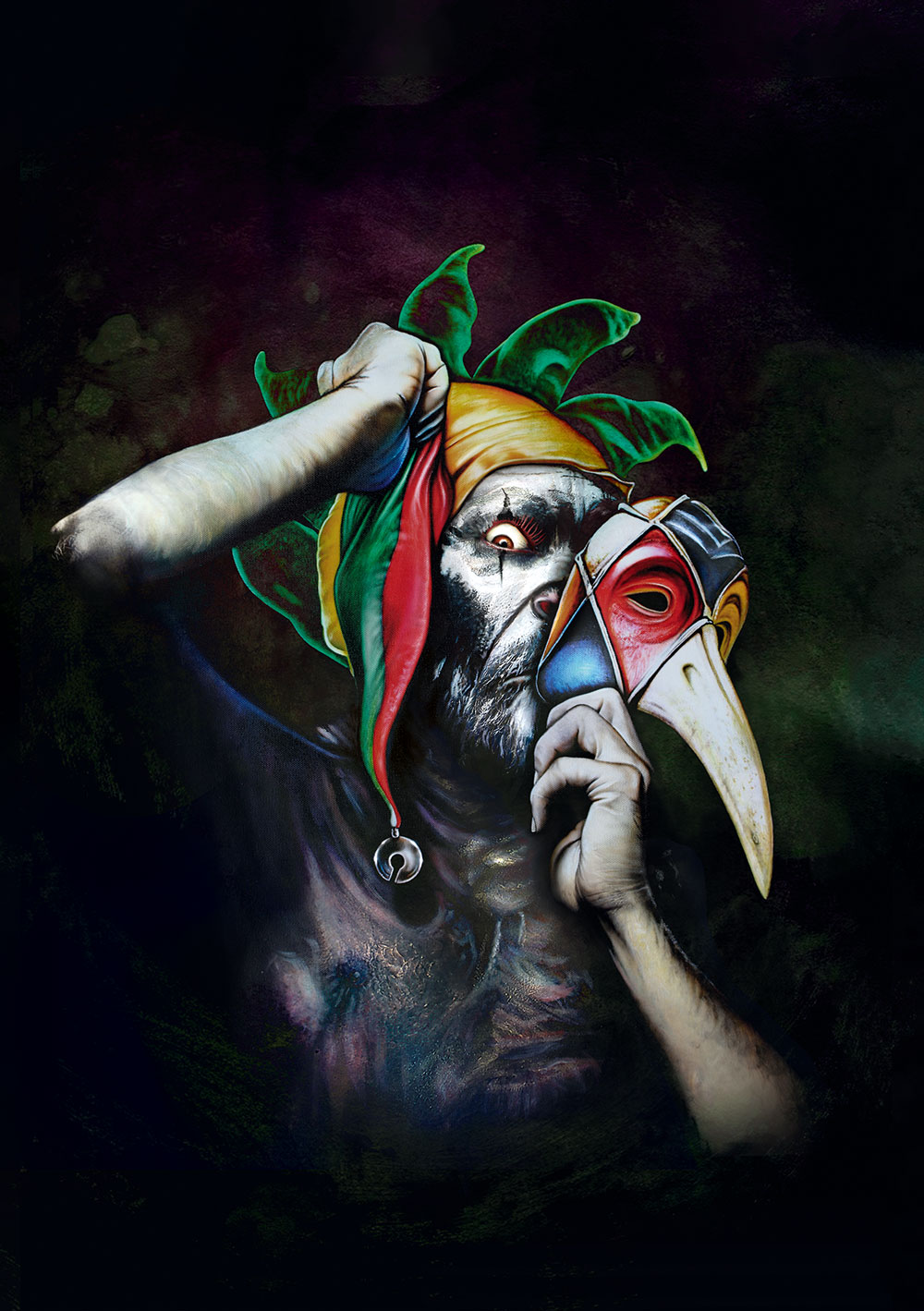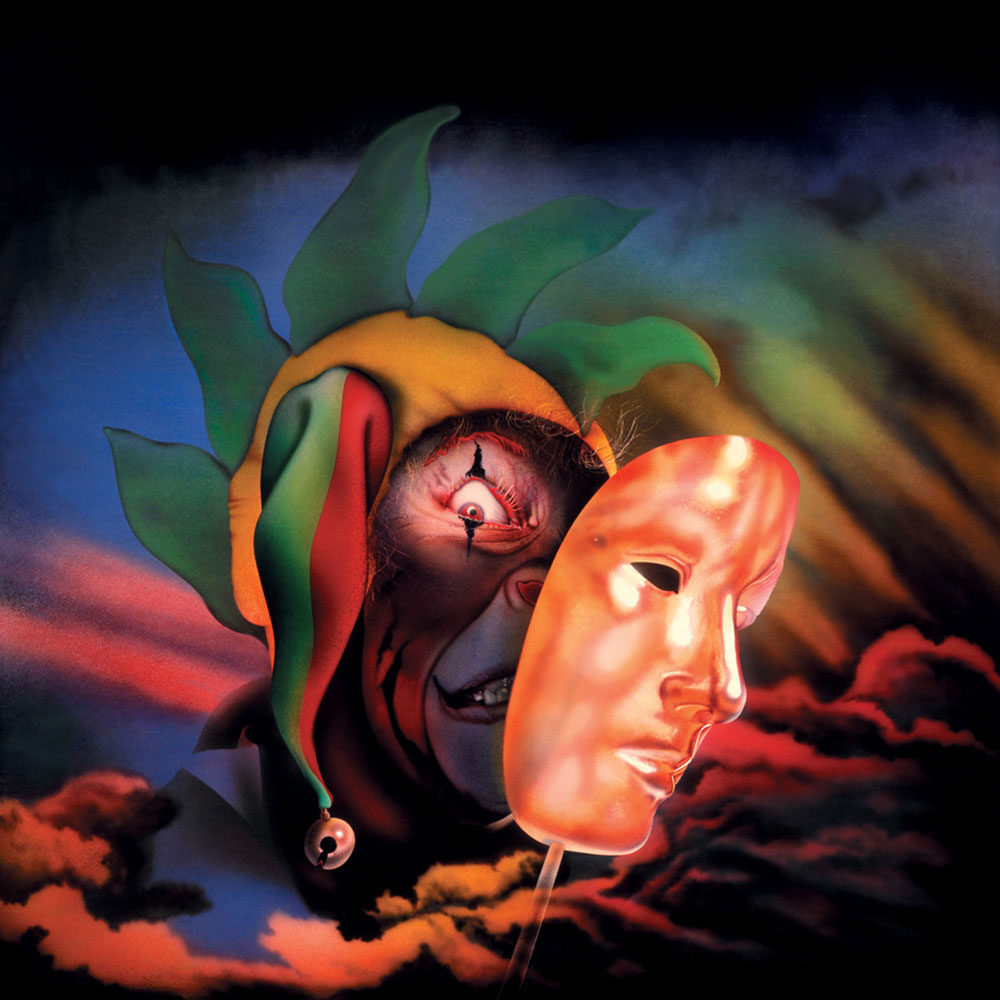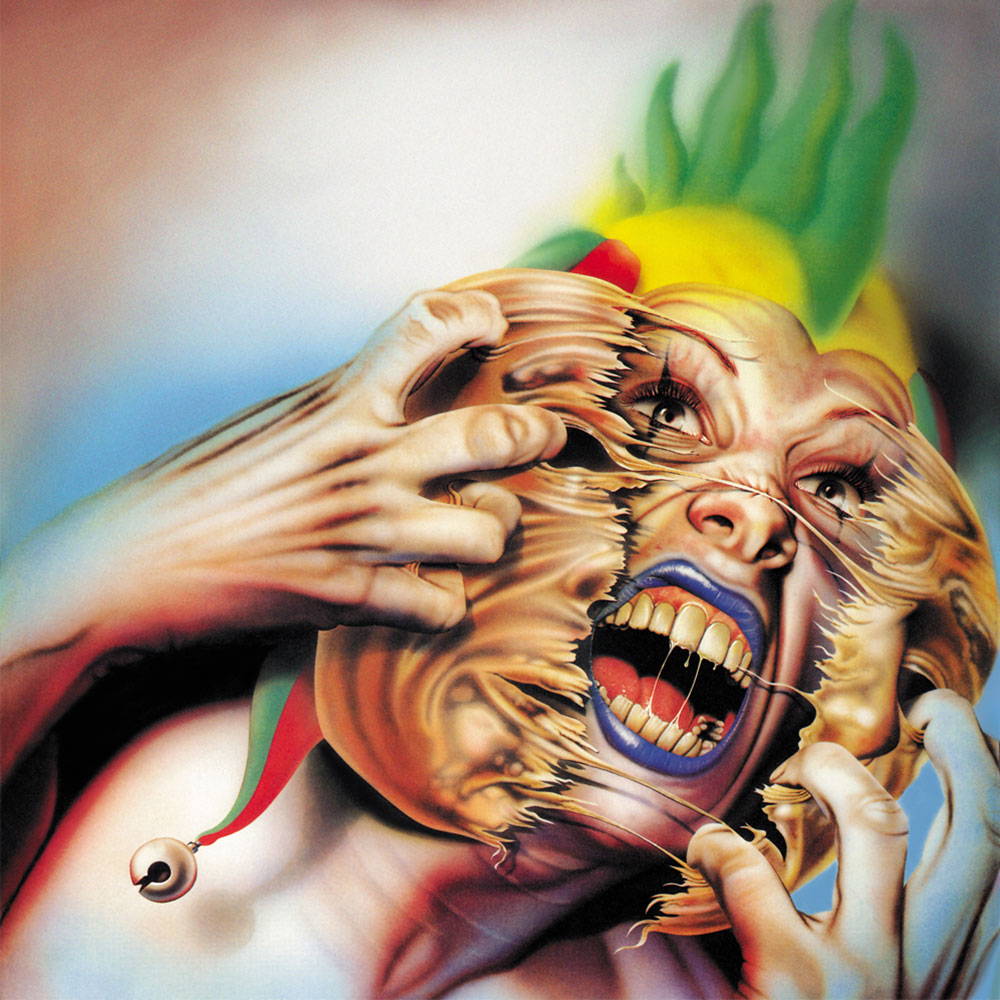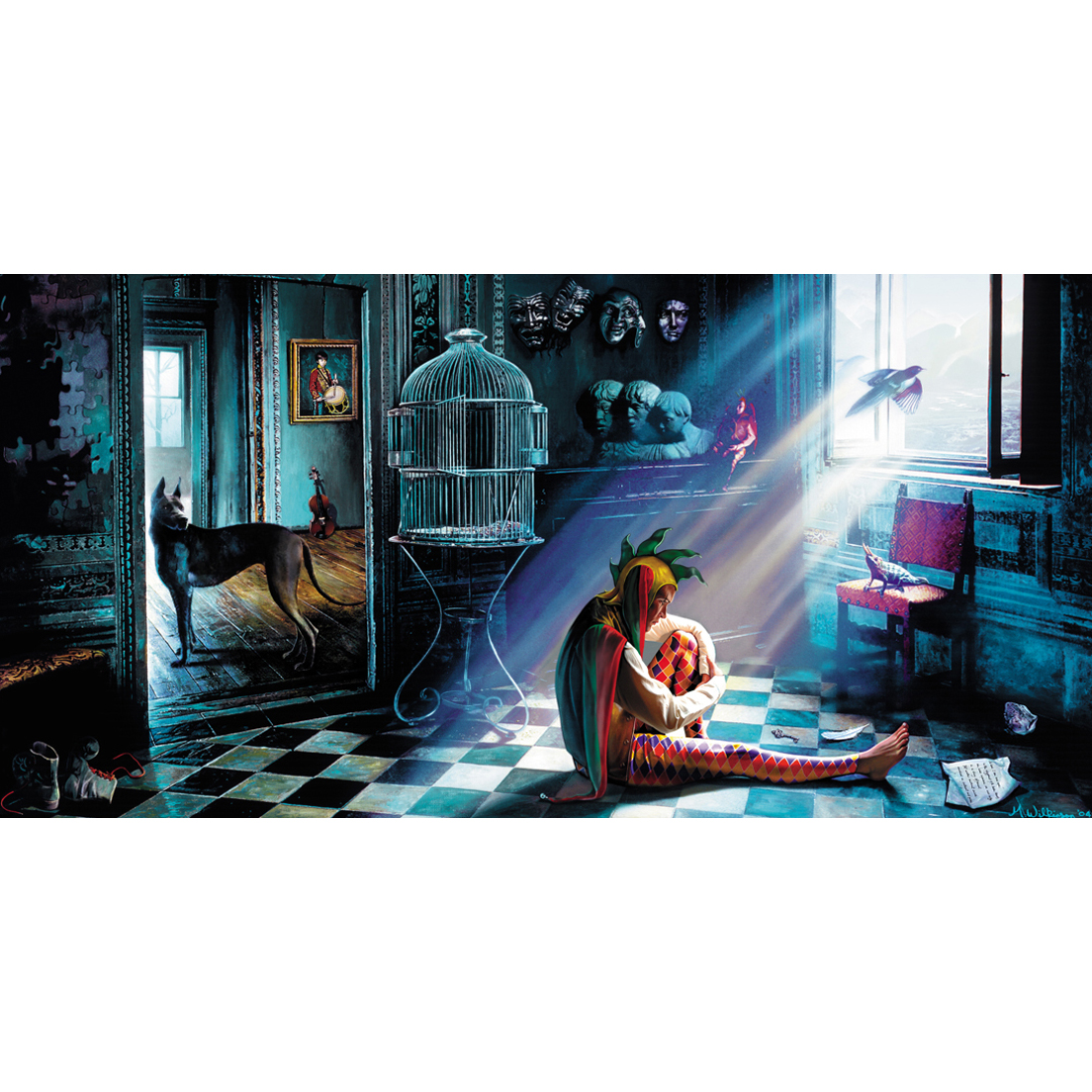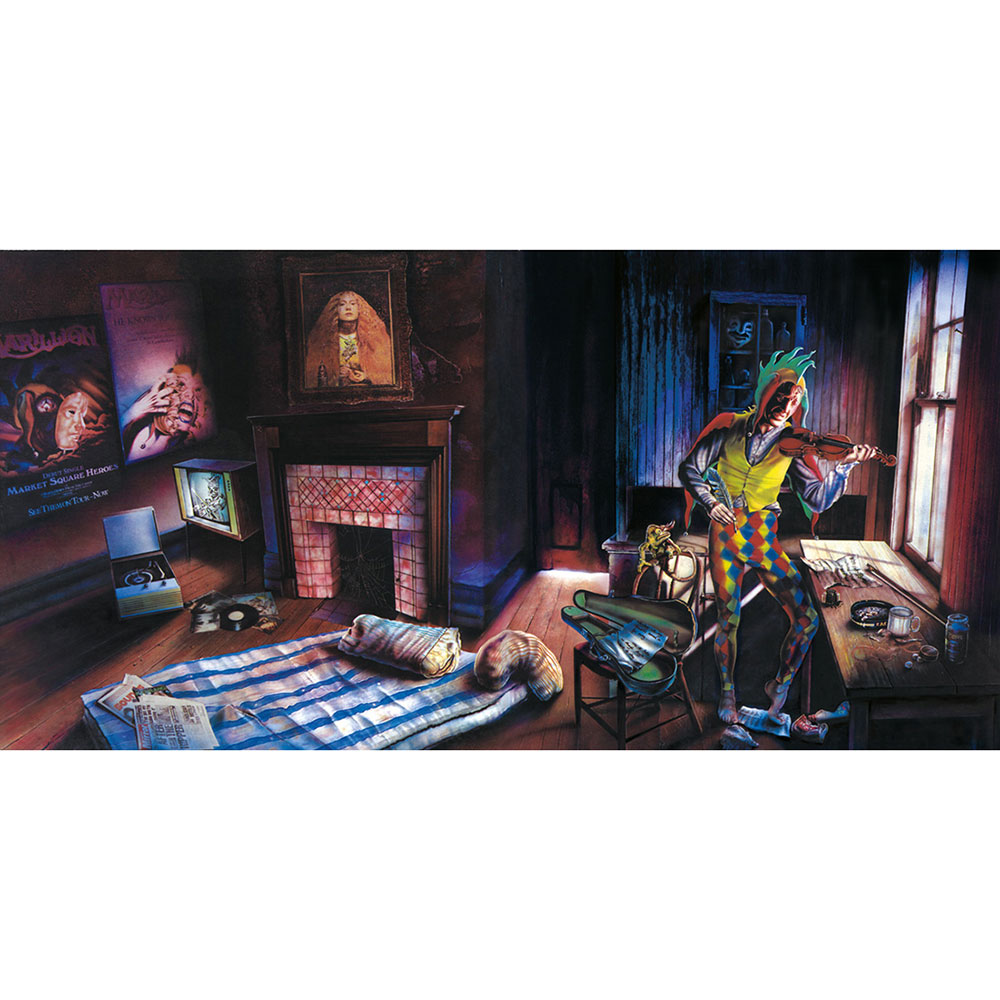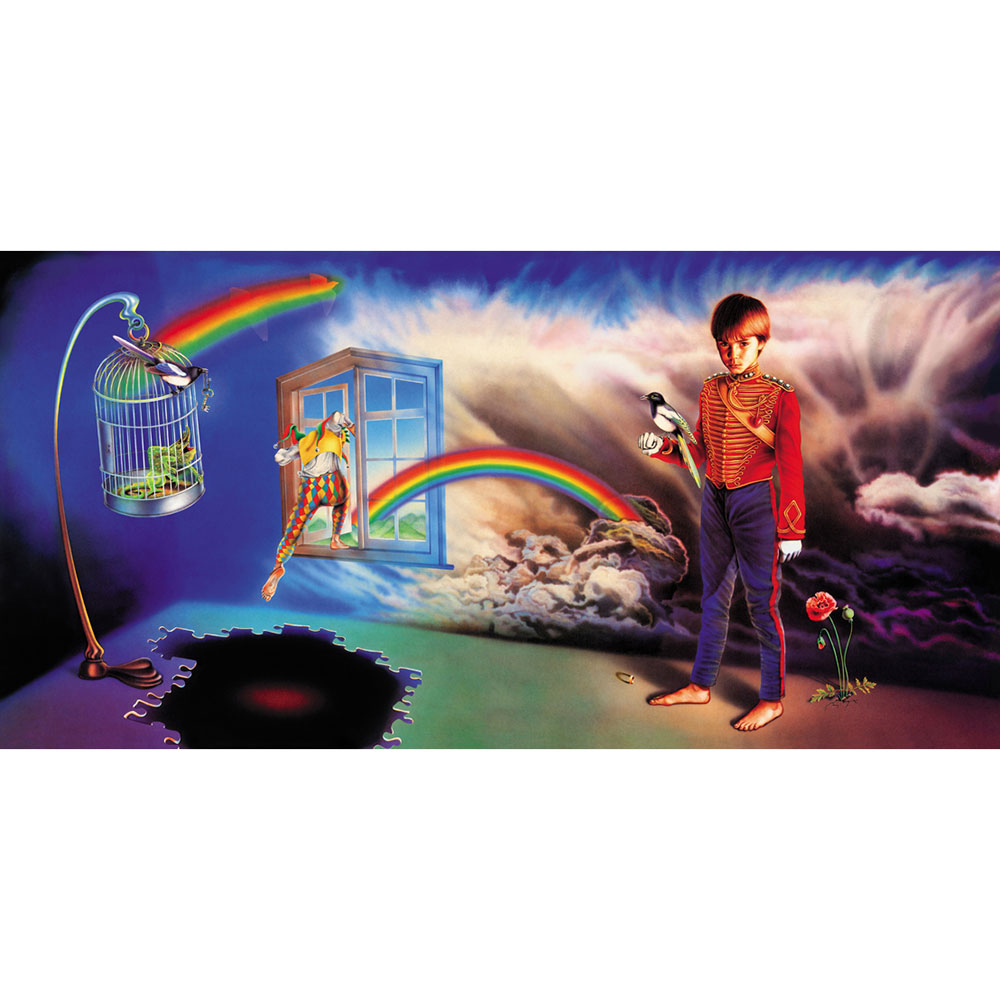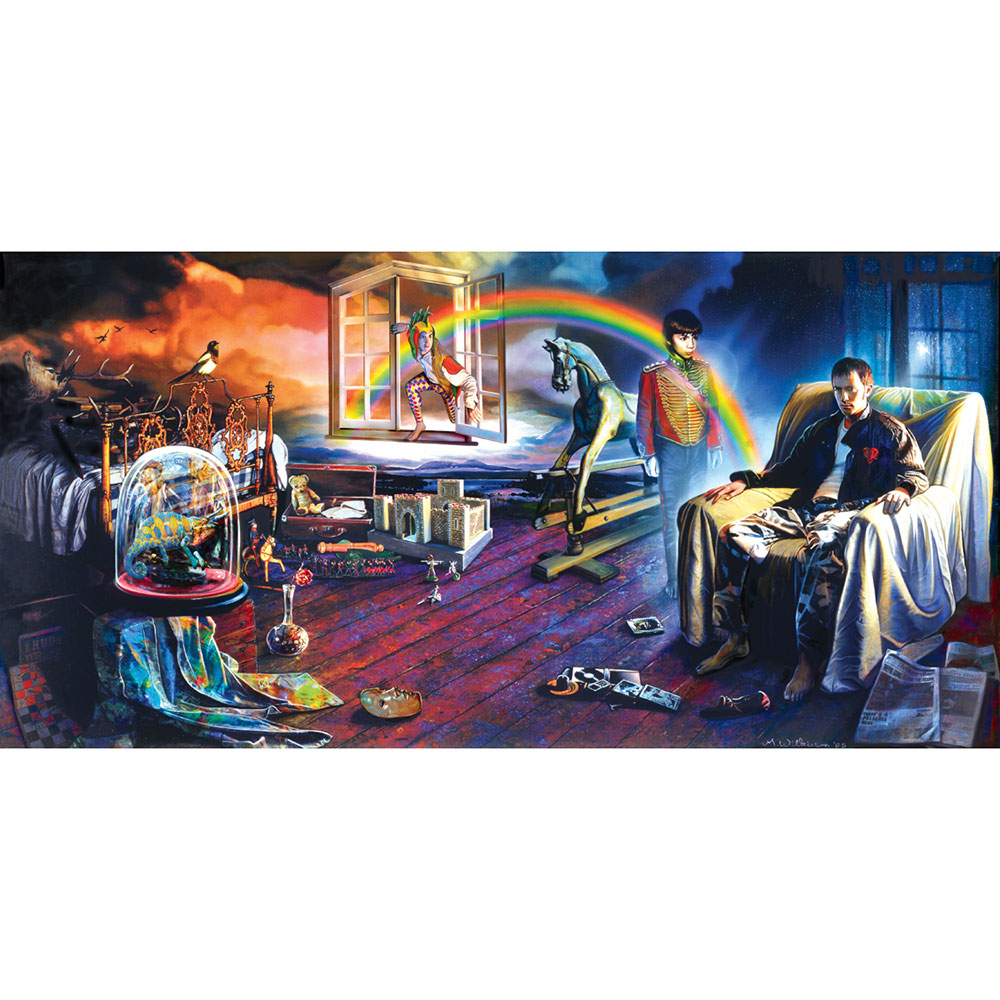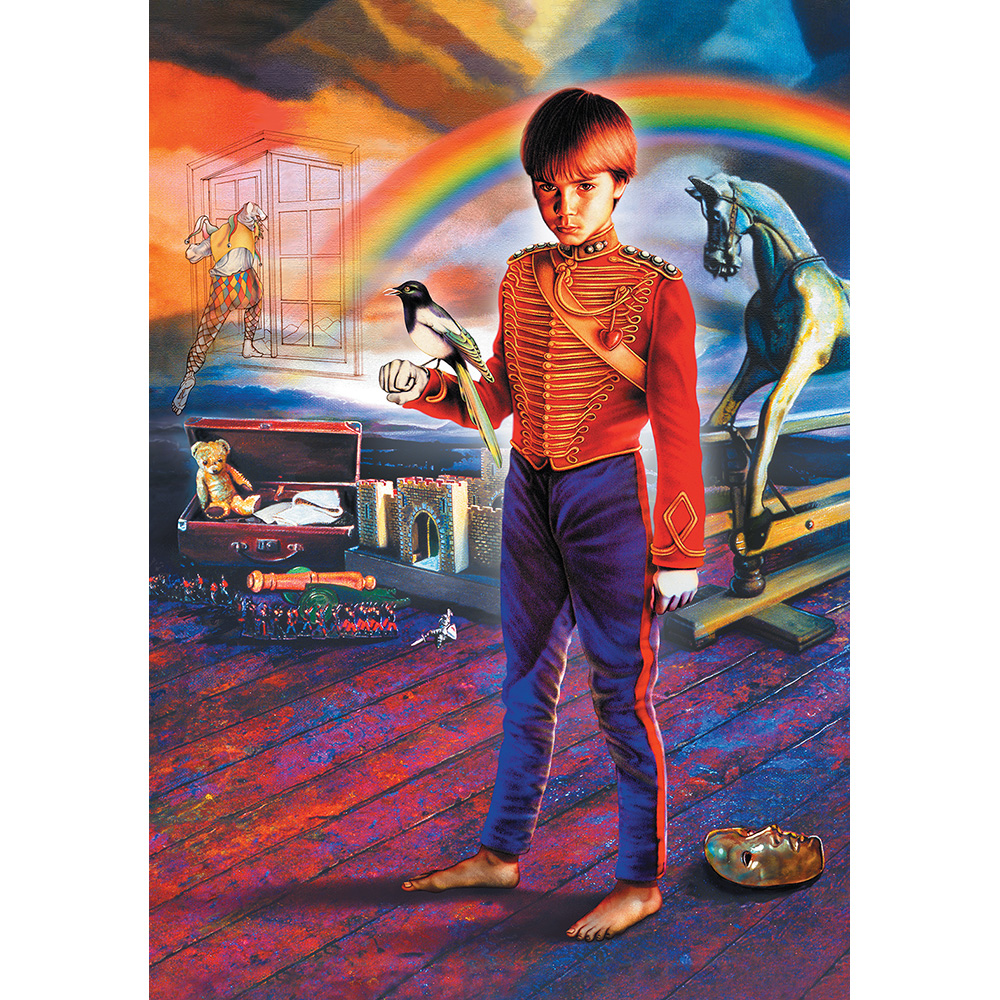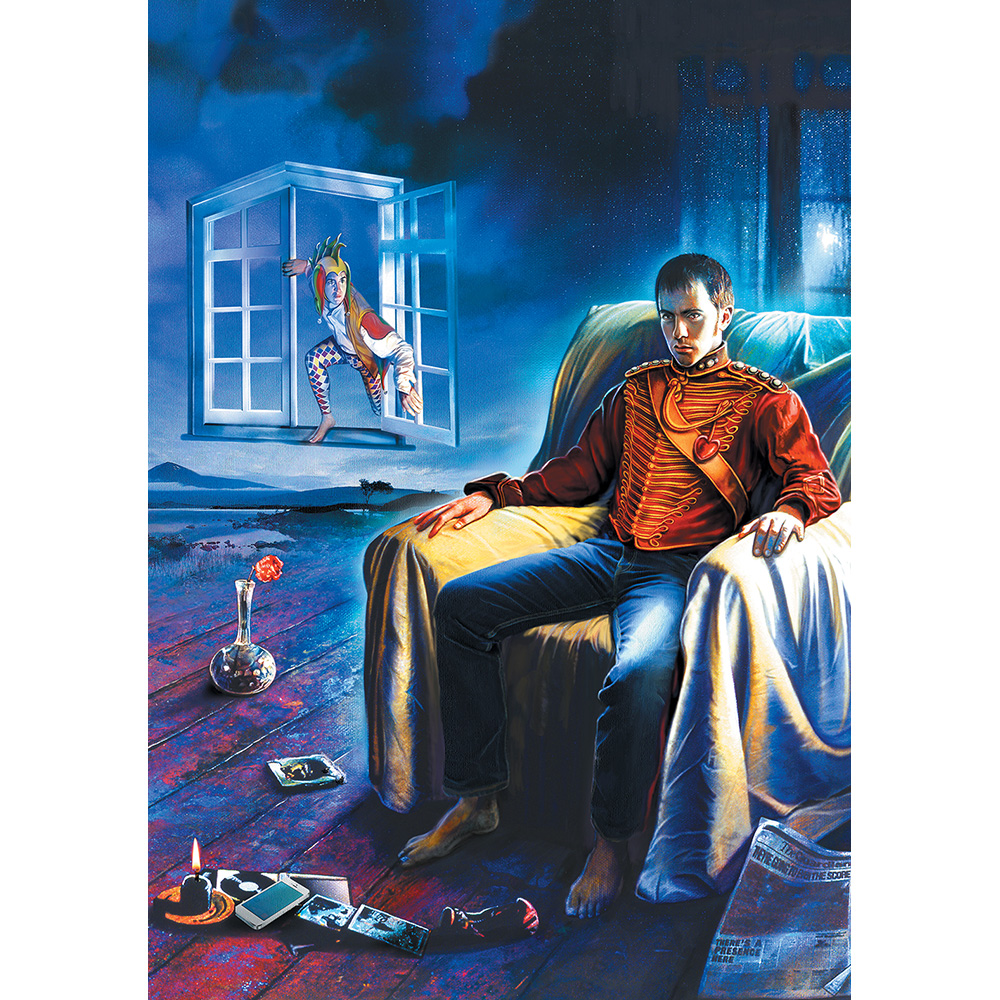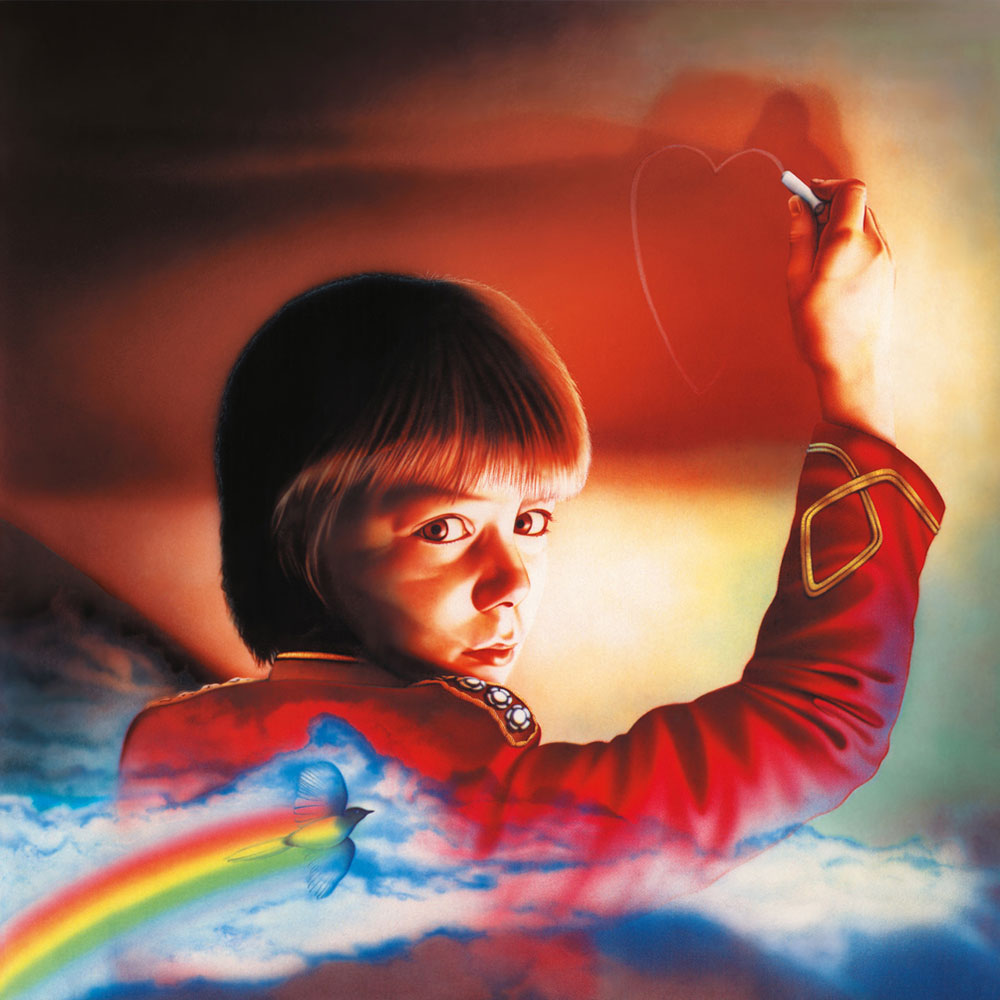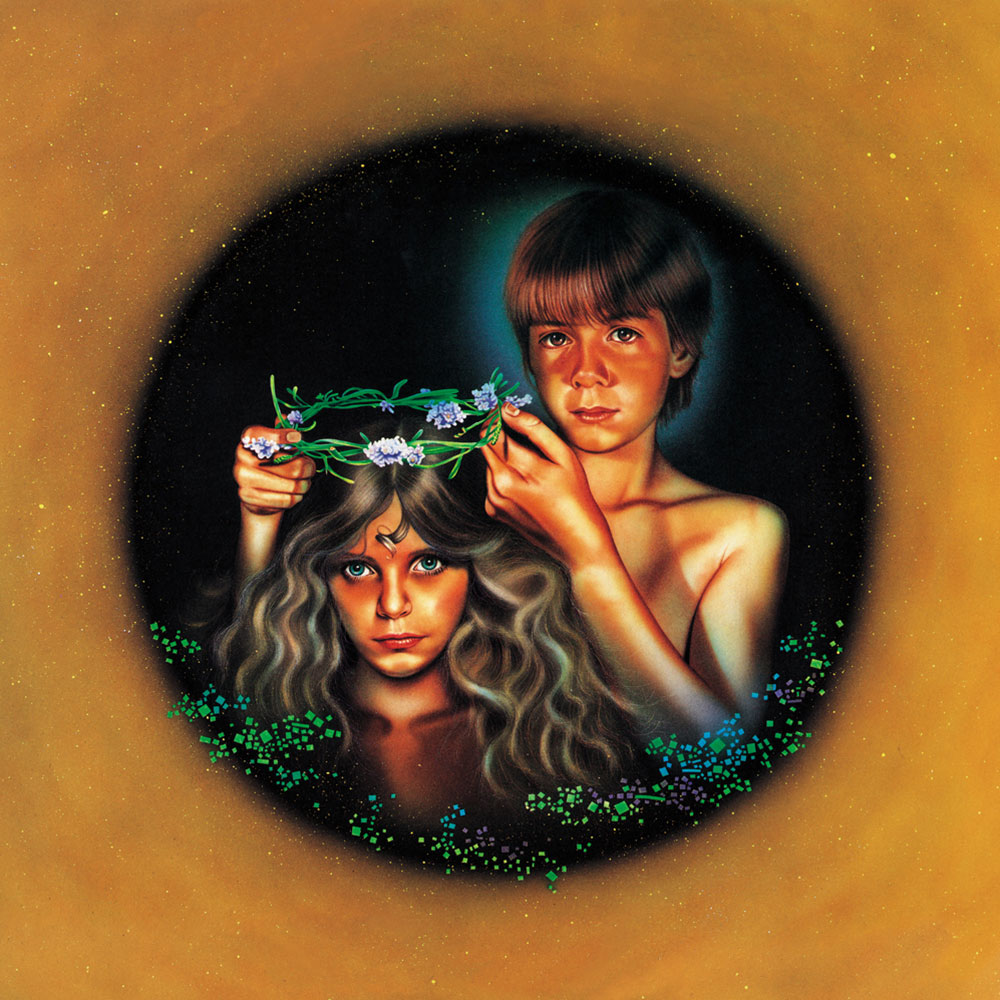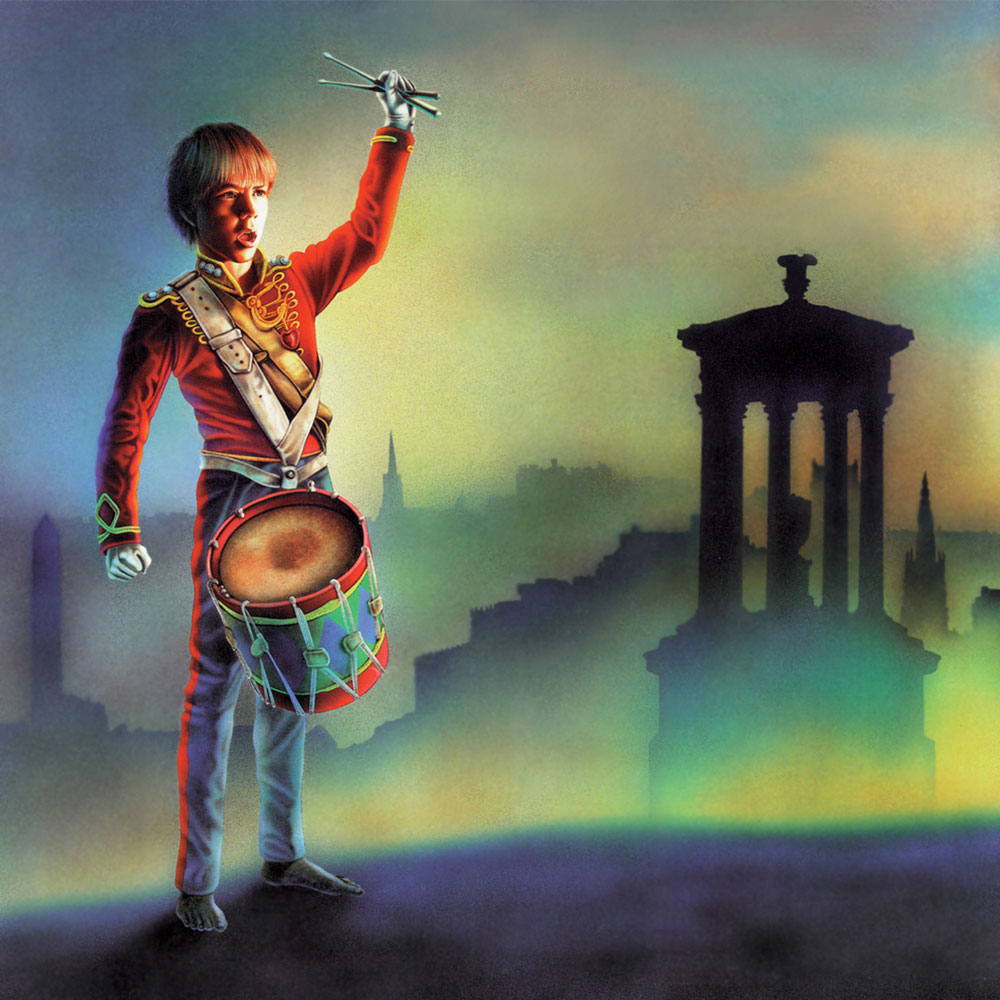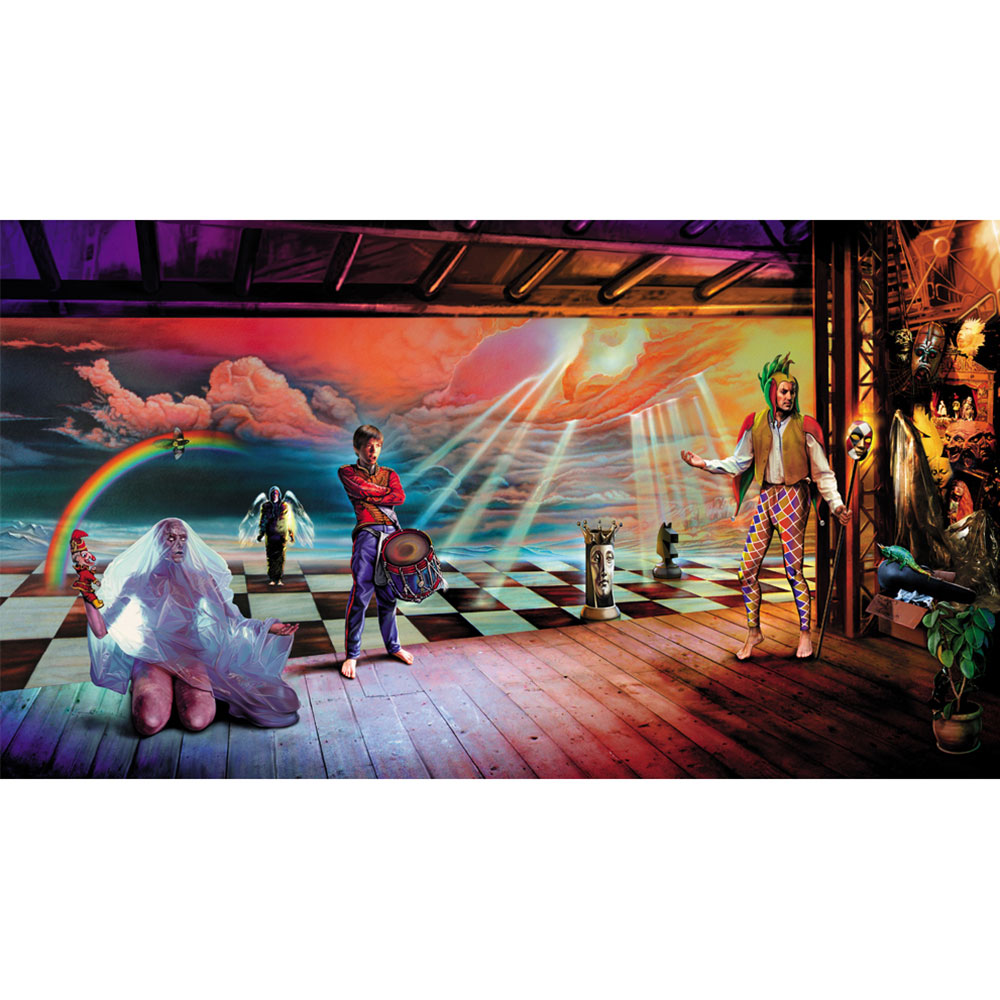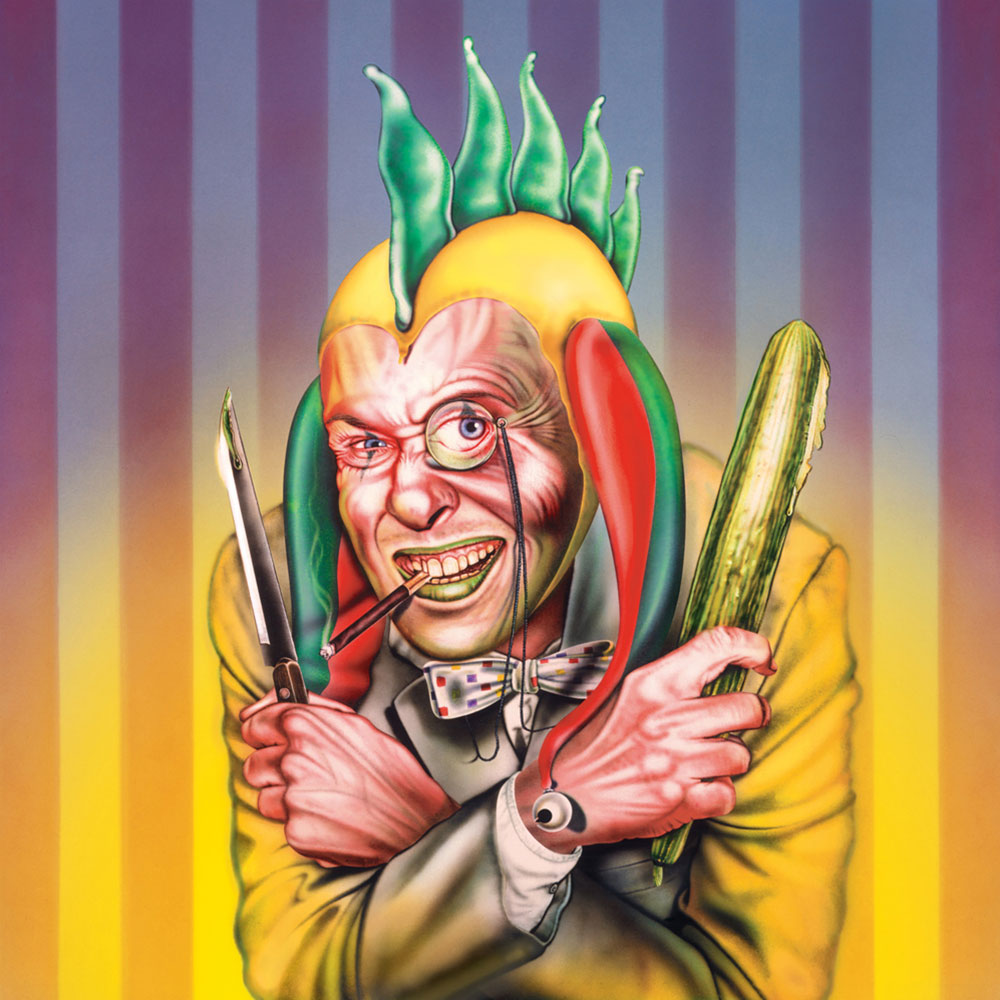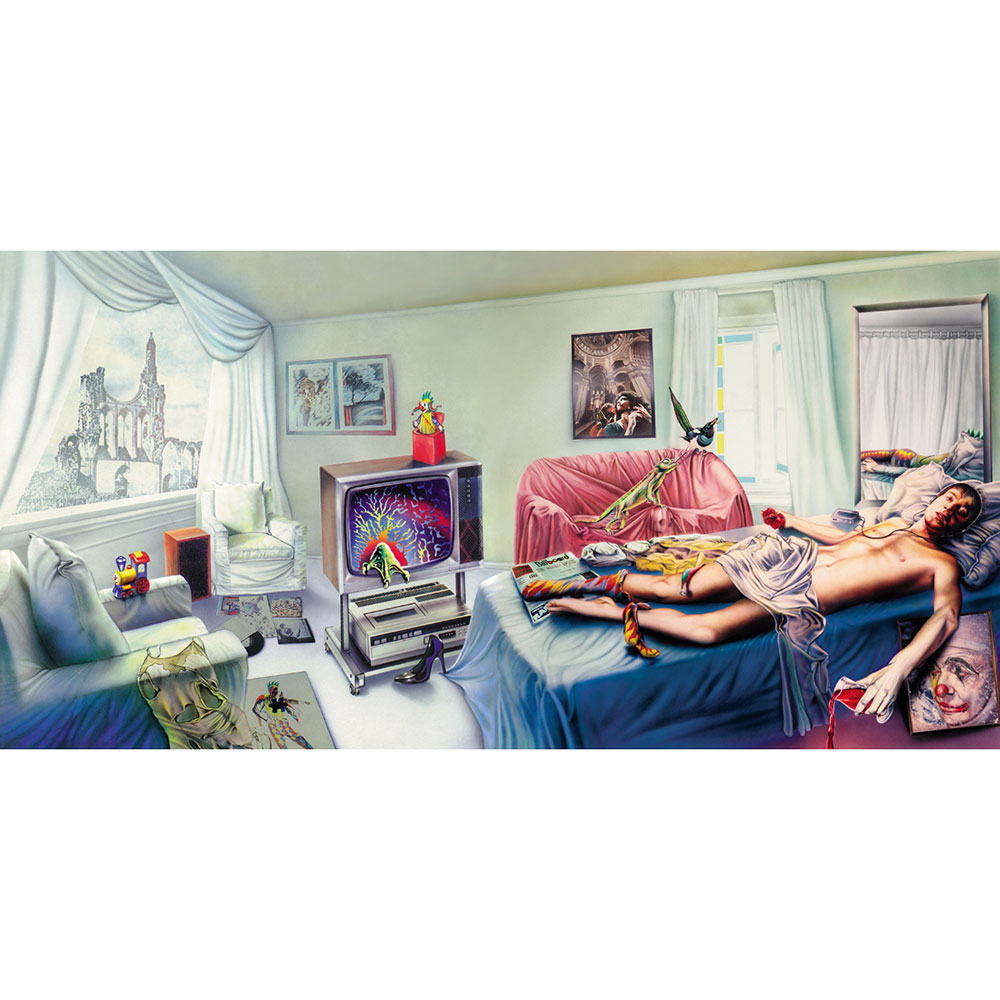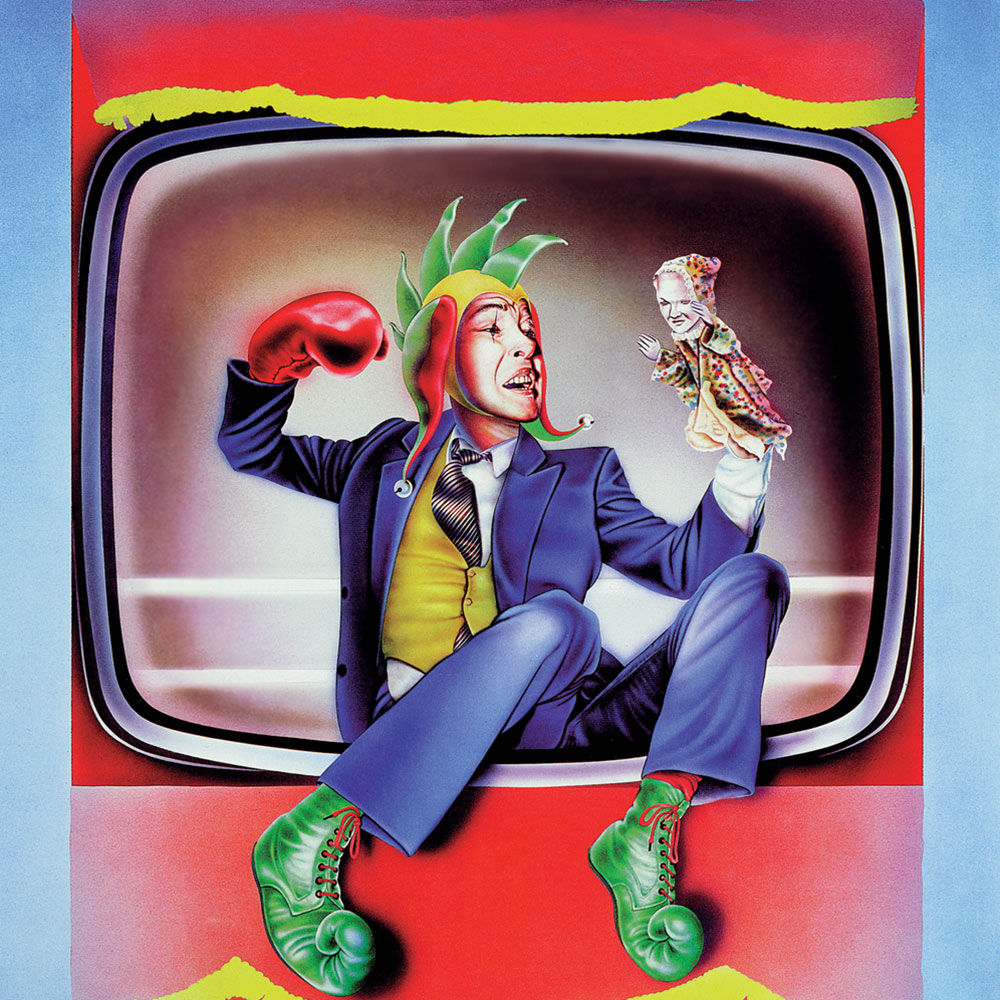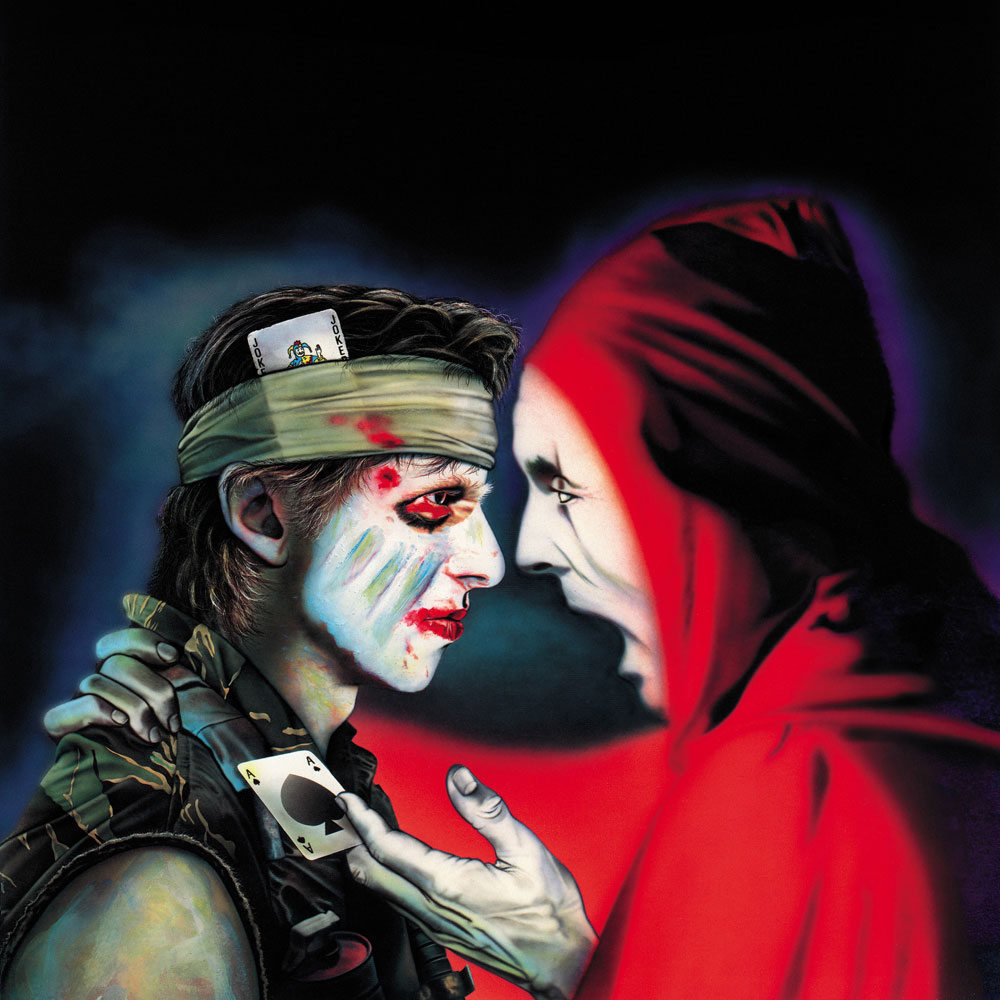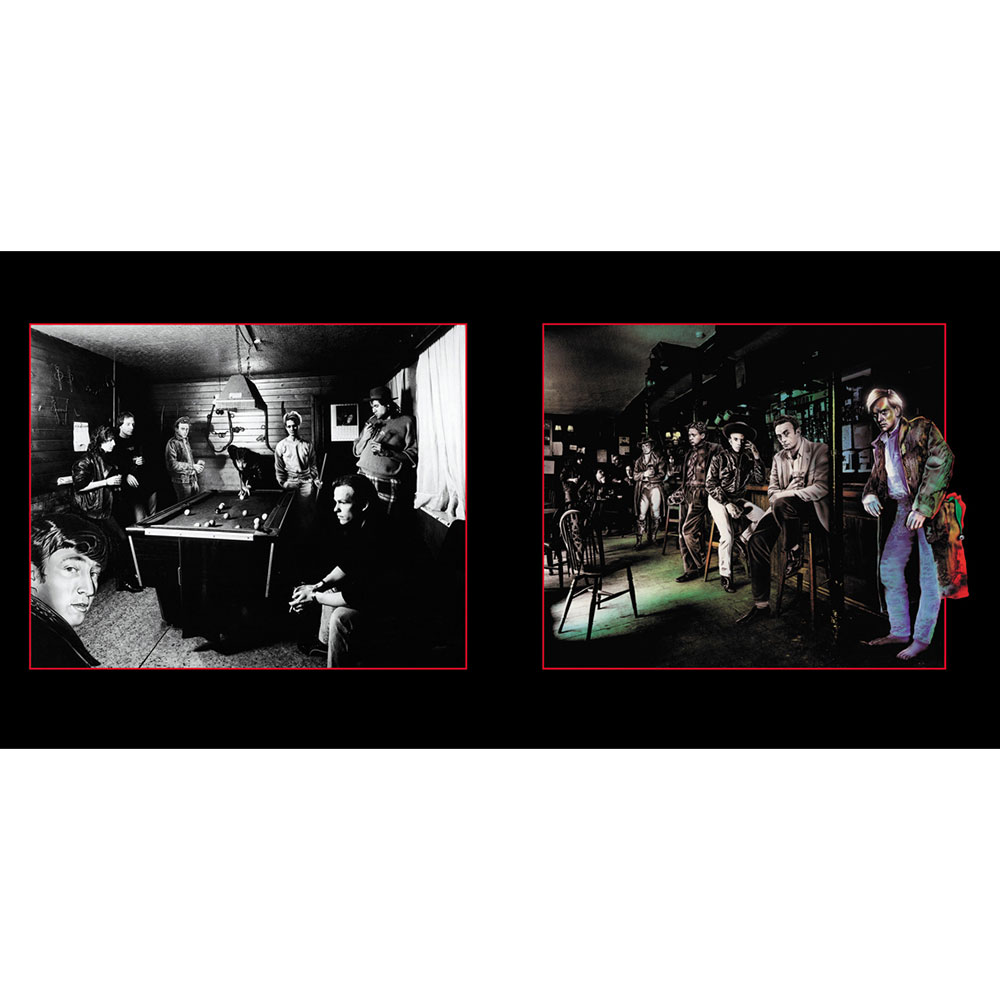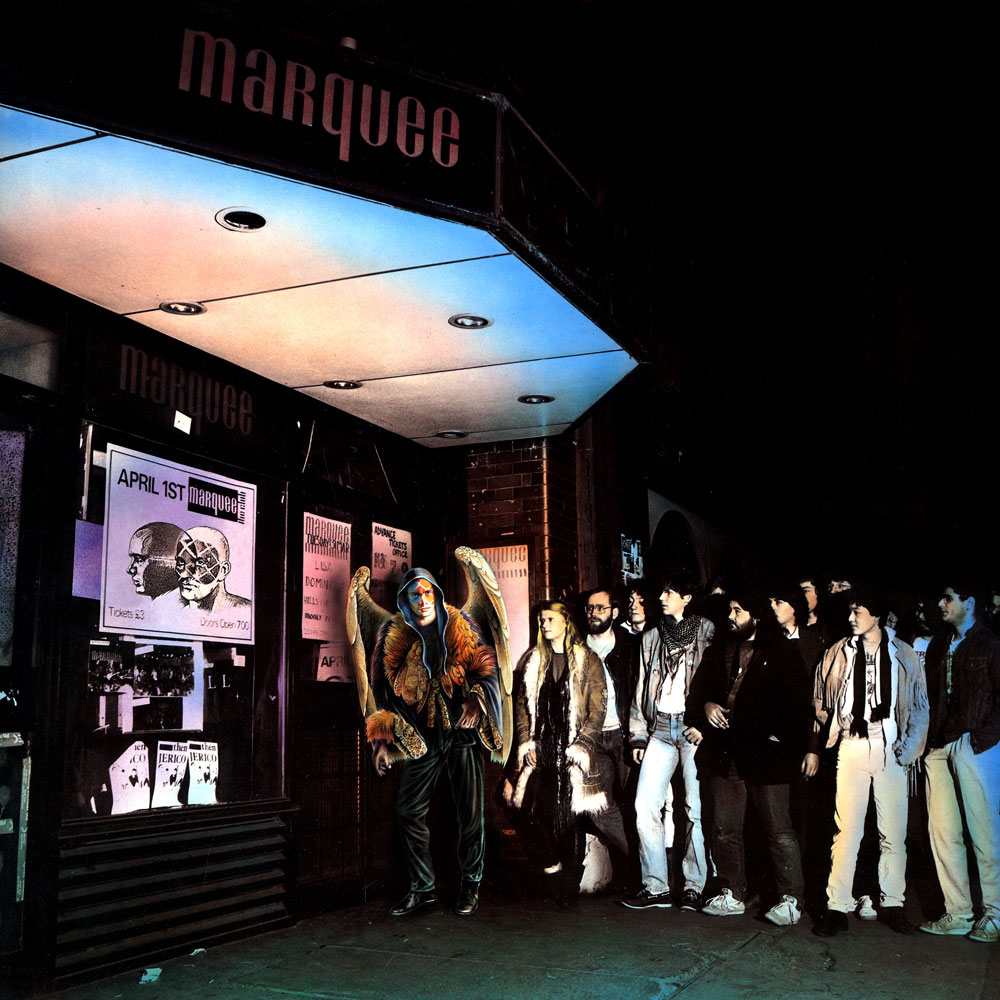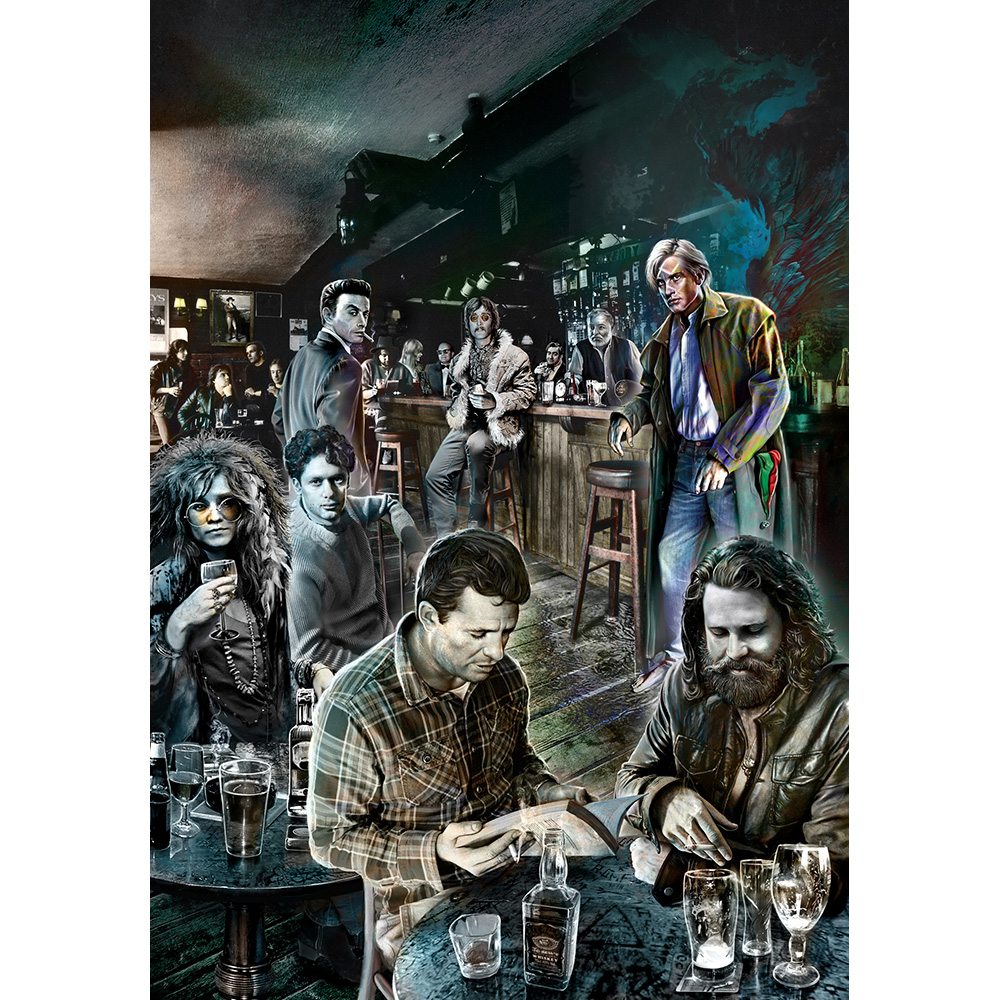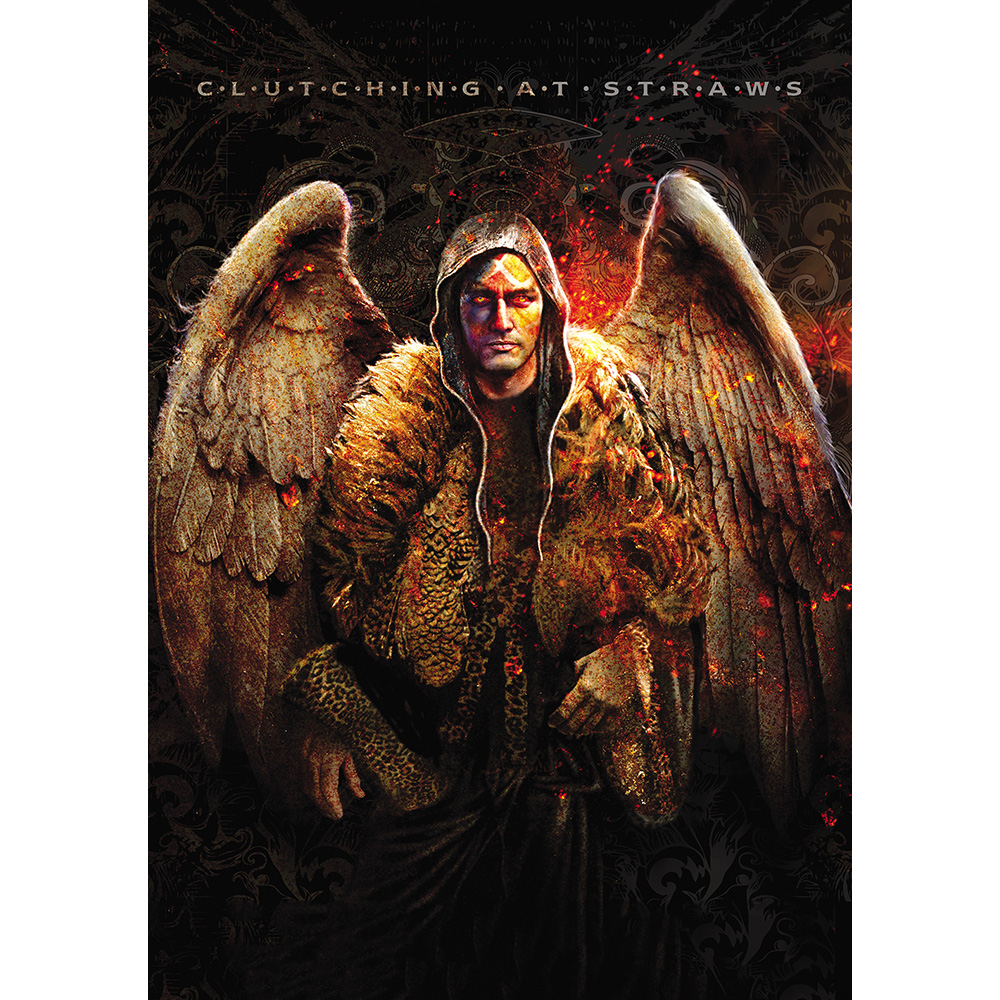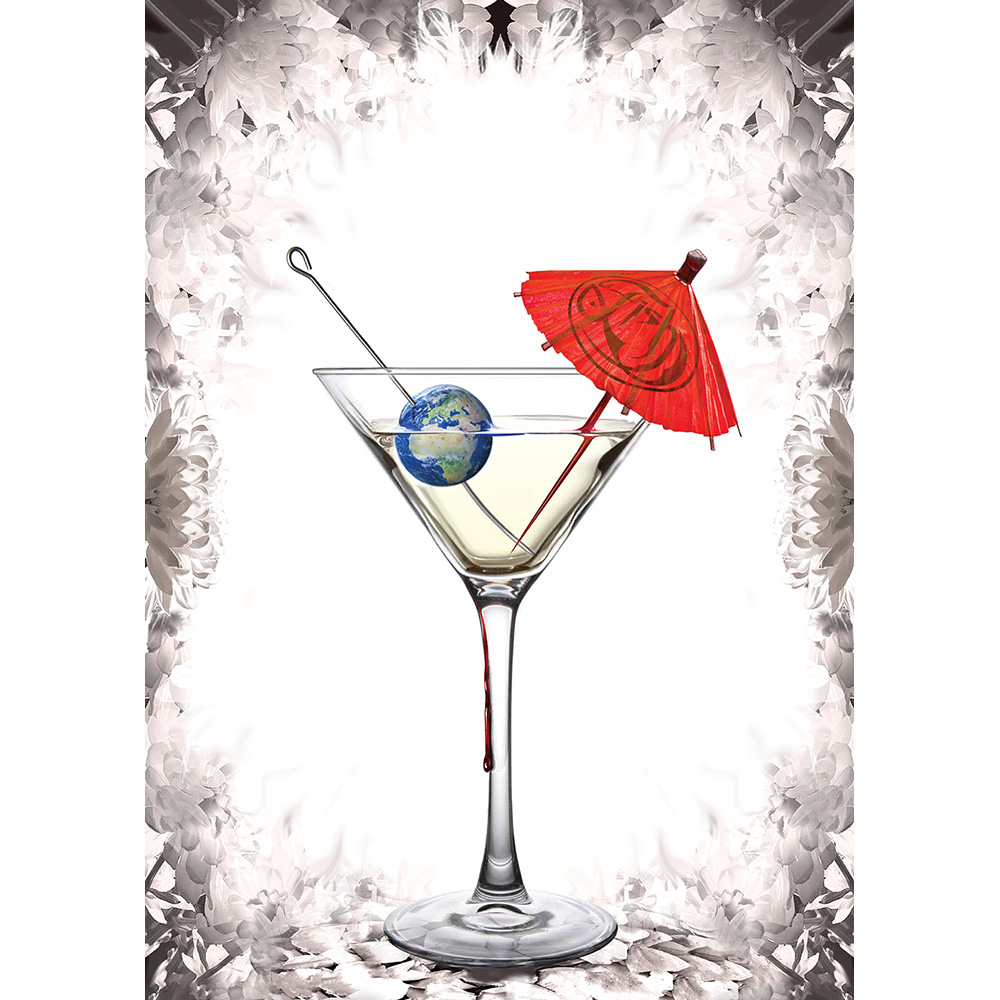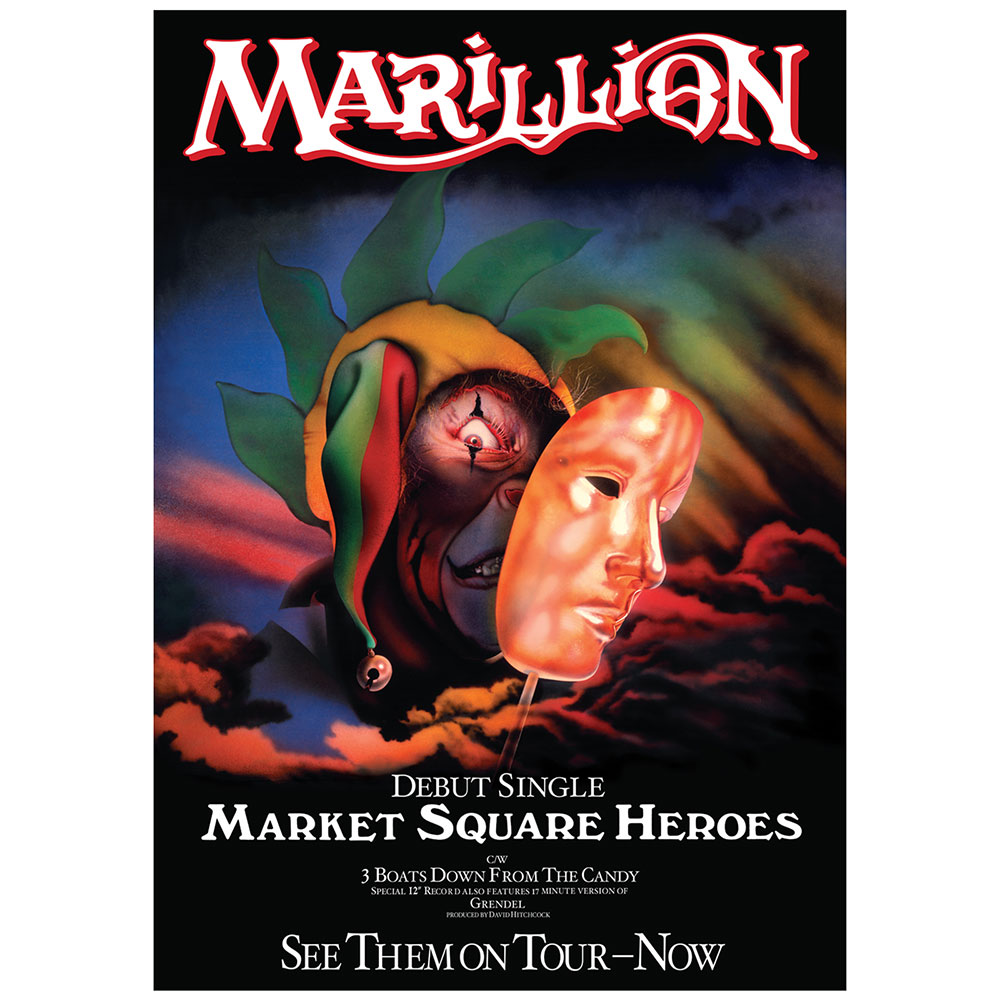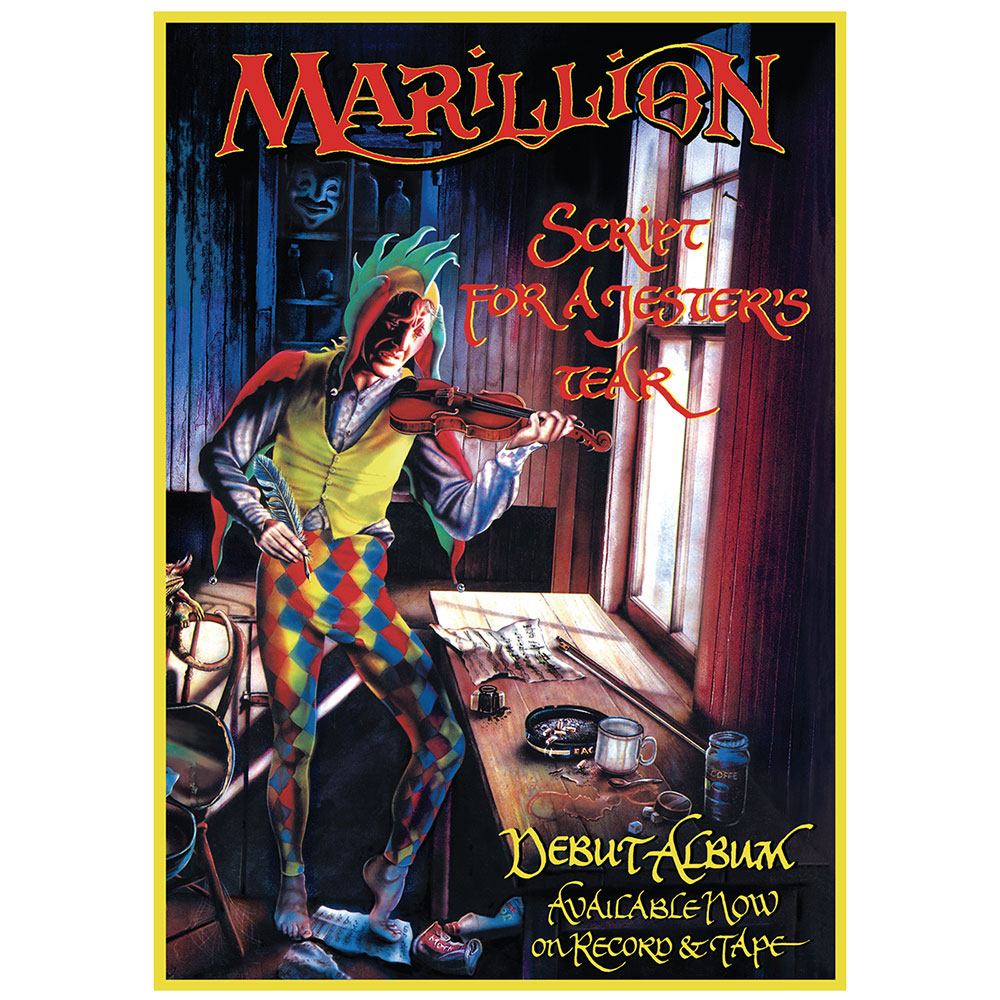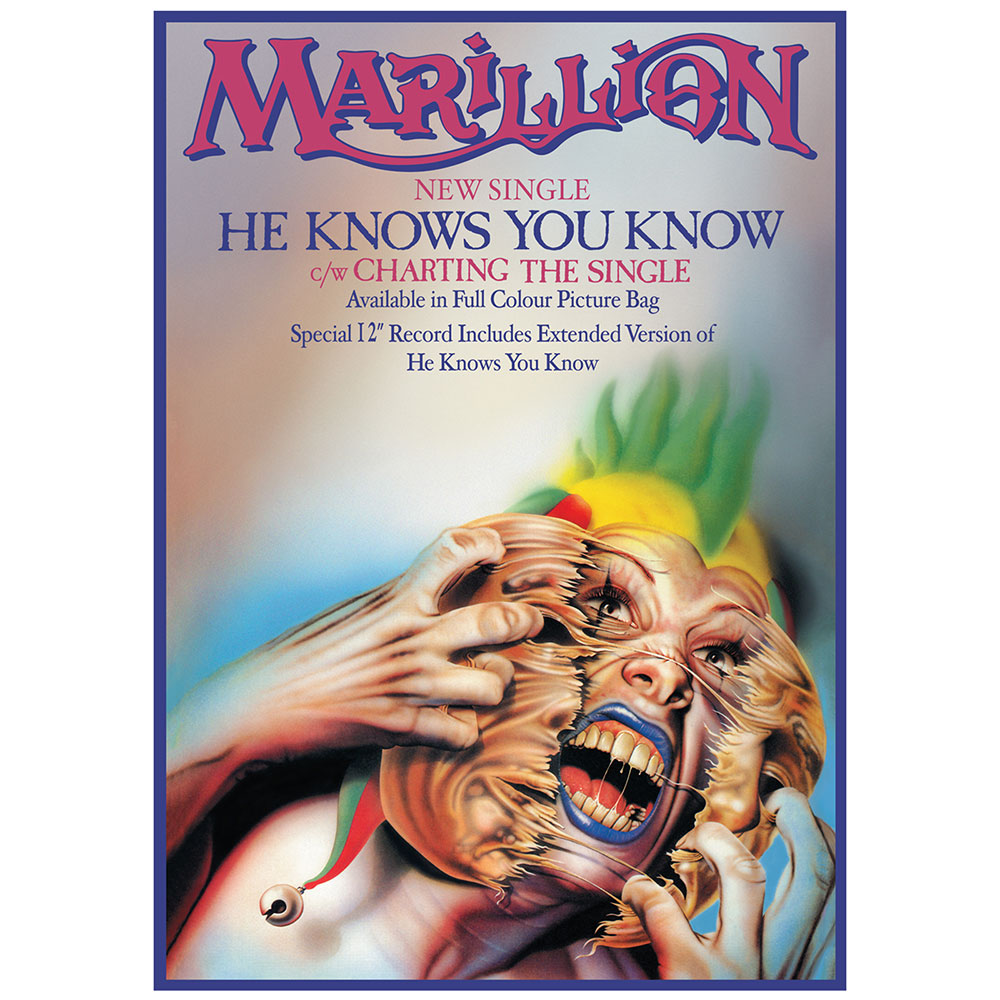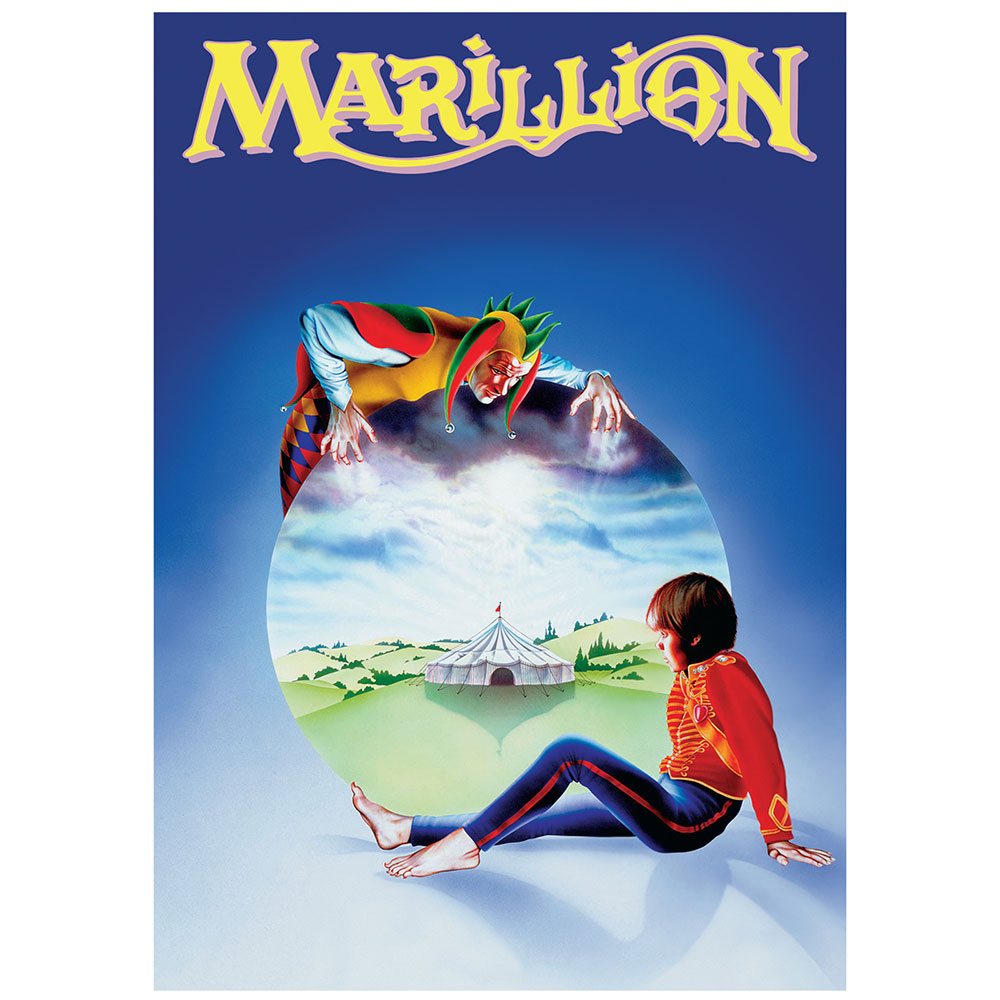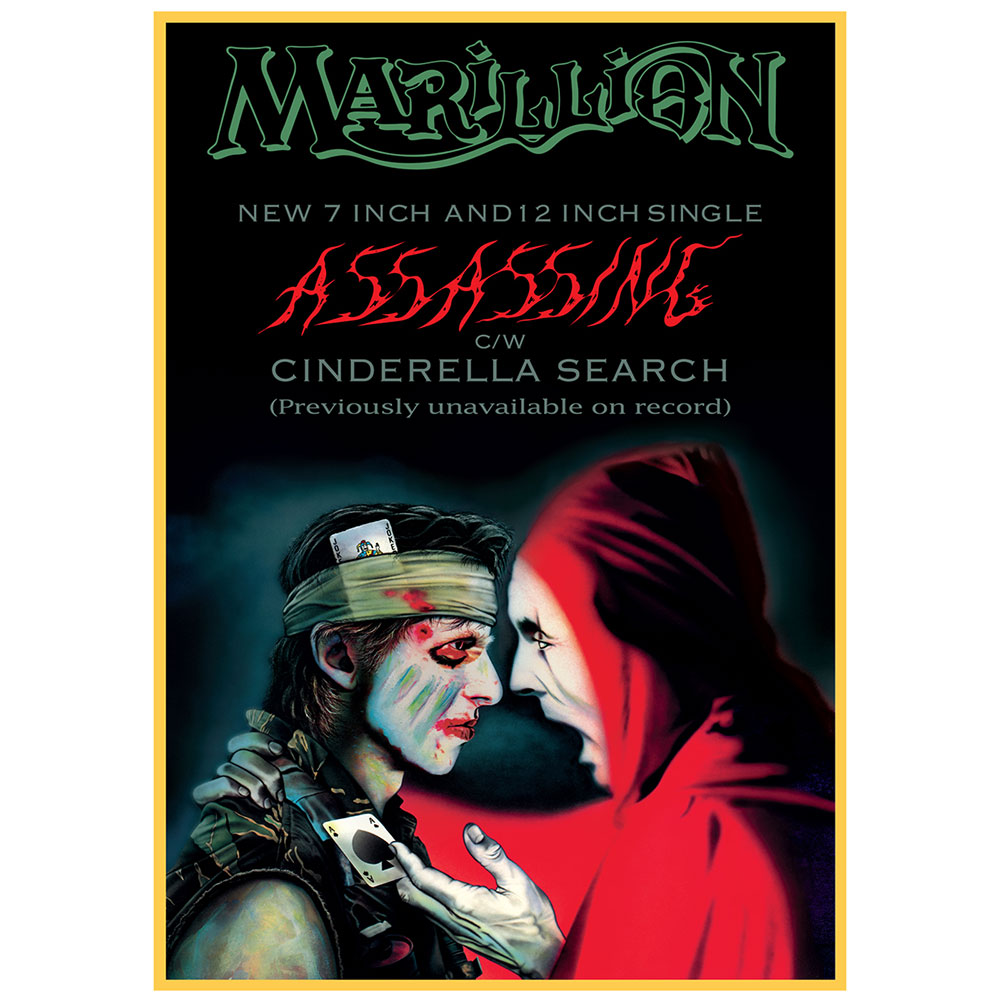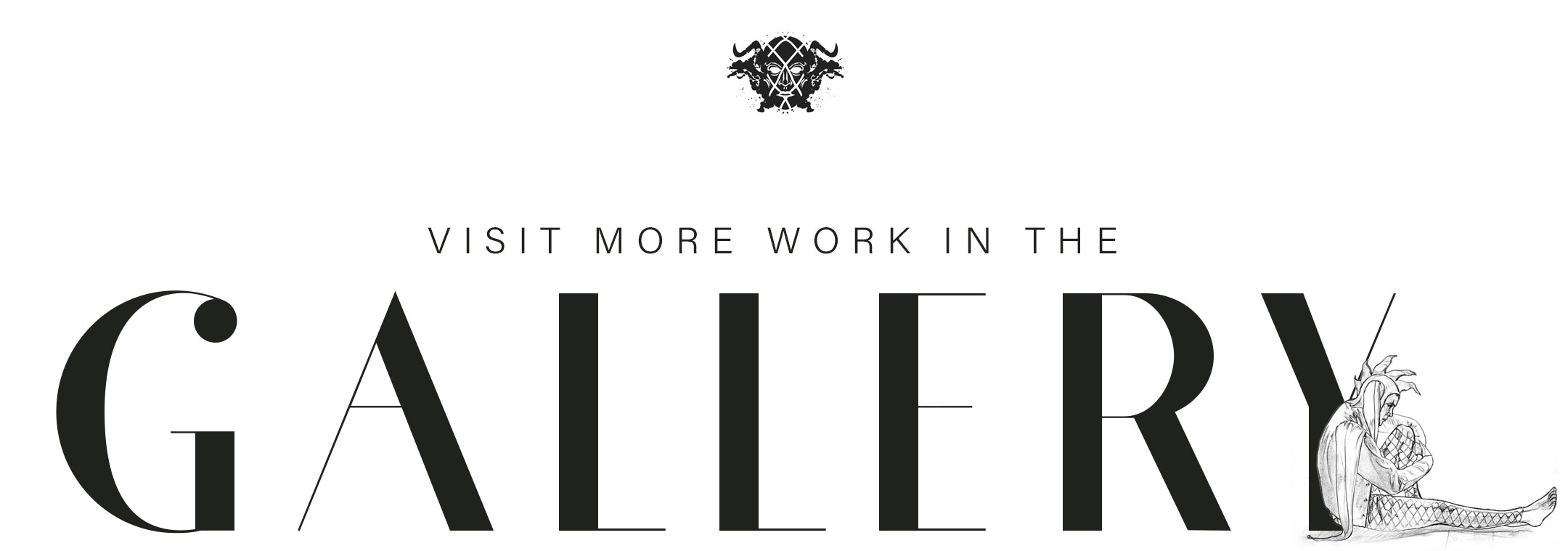40 years of marillion art
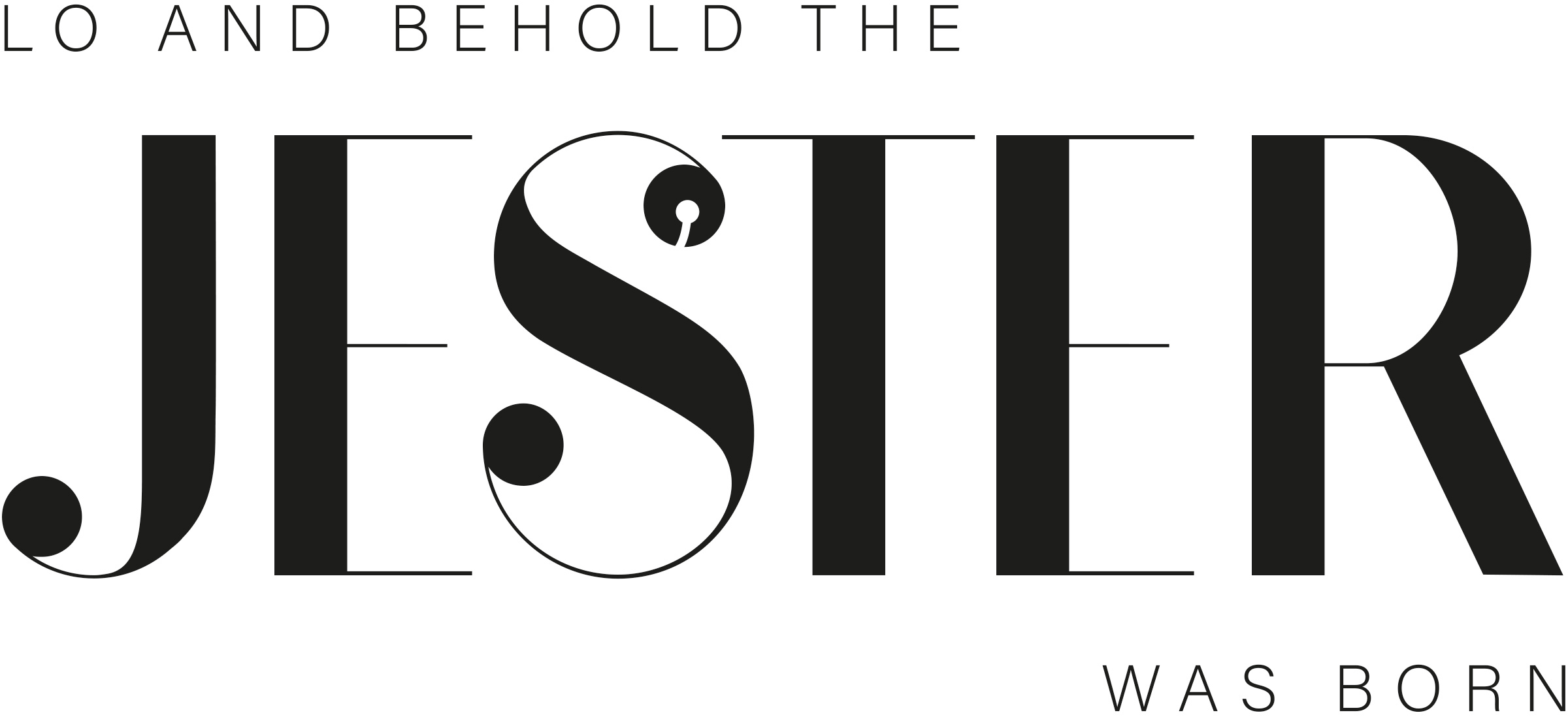
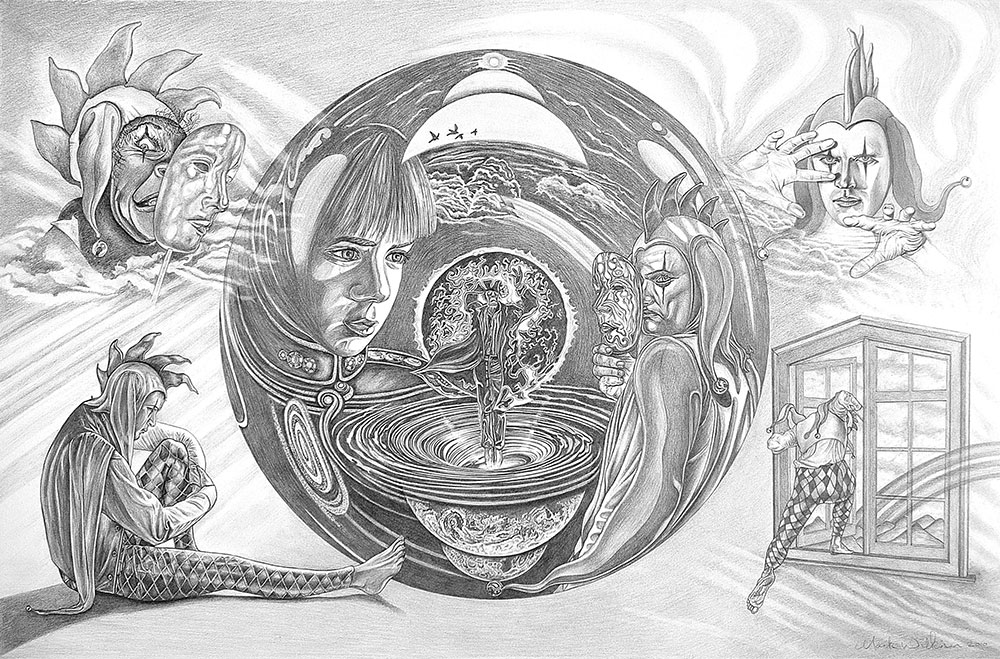
An overheard conversation // in a bar led to a chance meeting – and the journey began! Marillion formed in Aylesbury in 1979, and were signed to EMI Records in 1982. They needed a visual artist to work with them. The brief for their first single was very precise: “Design a manic jester with a crazed eye, hiding behind a mask”. The sketch below was Mark’s first attempt. They said “OK – now let’s see it coloured in!”
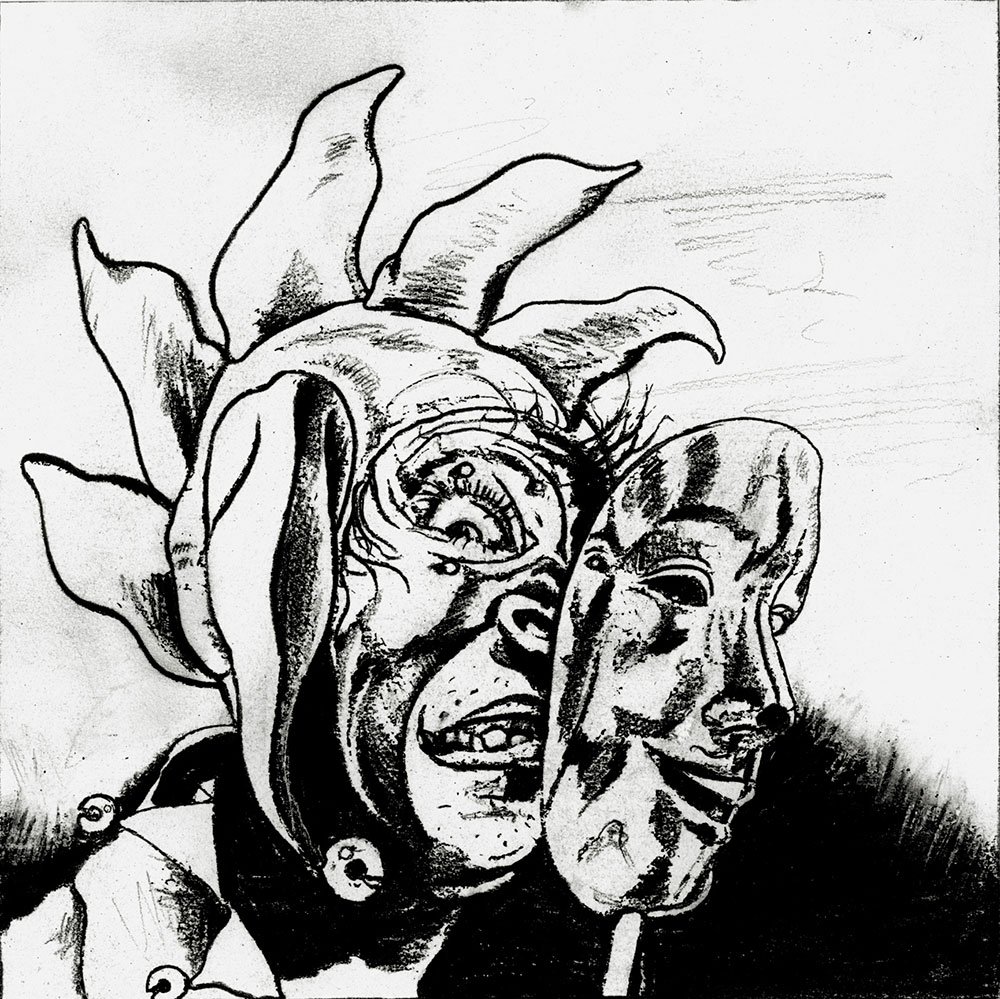
Market Square Heroes, 1982 // This launched Marillion’s career and kick-started Mark’s.
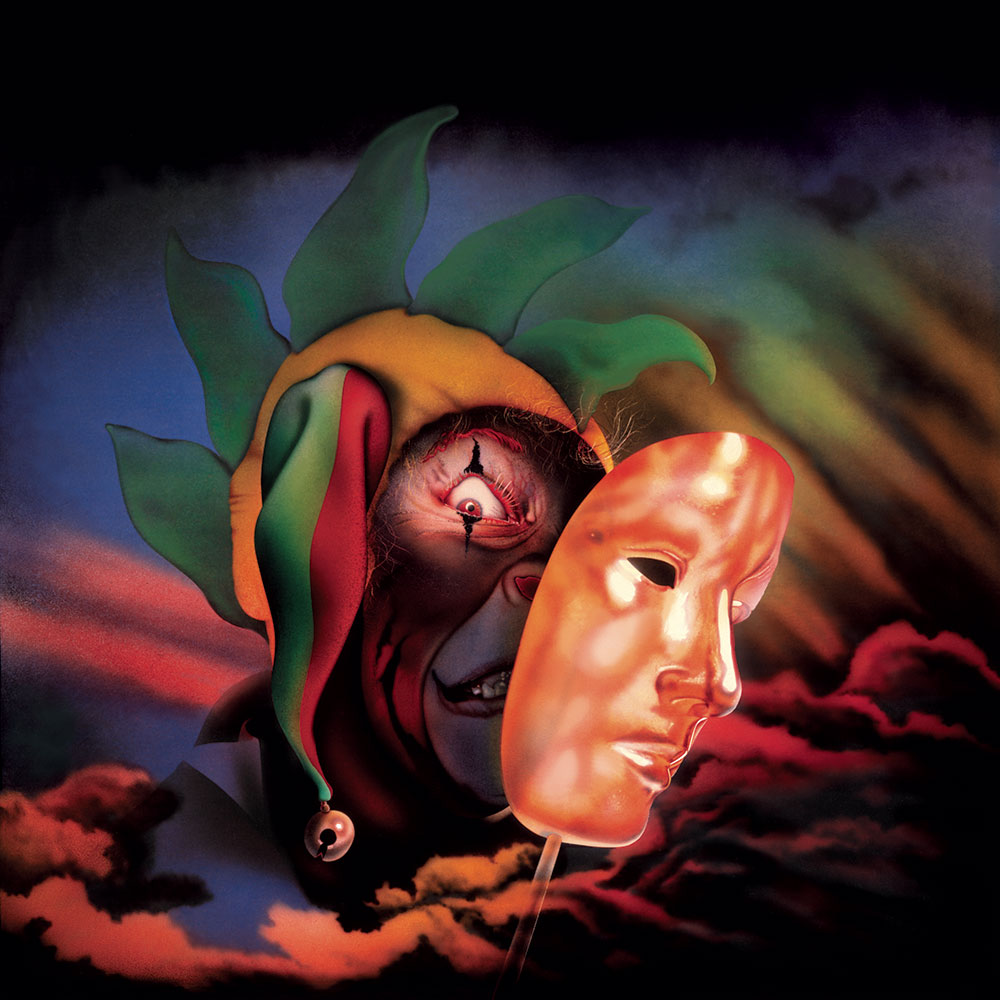
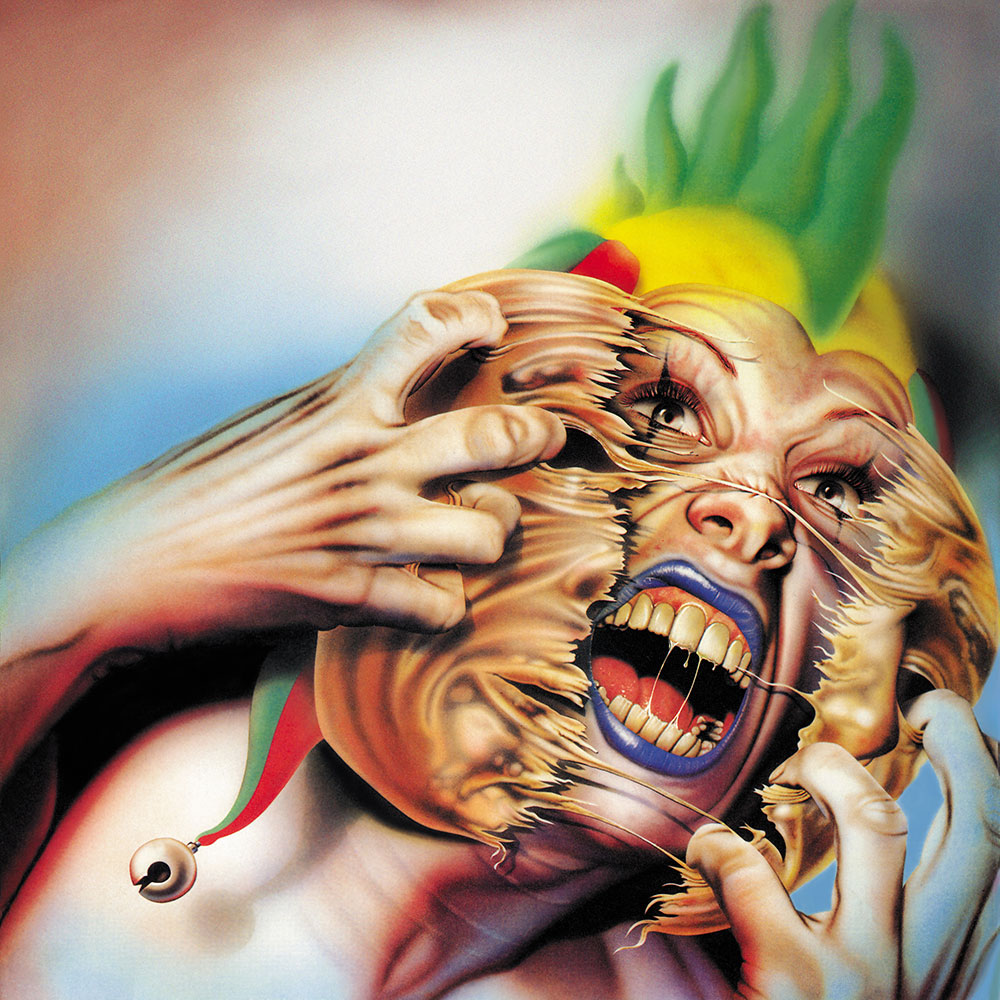
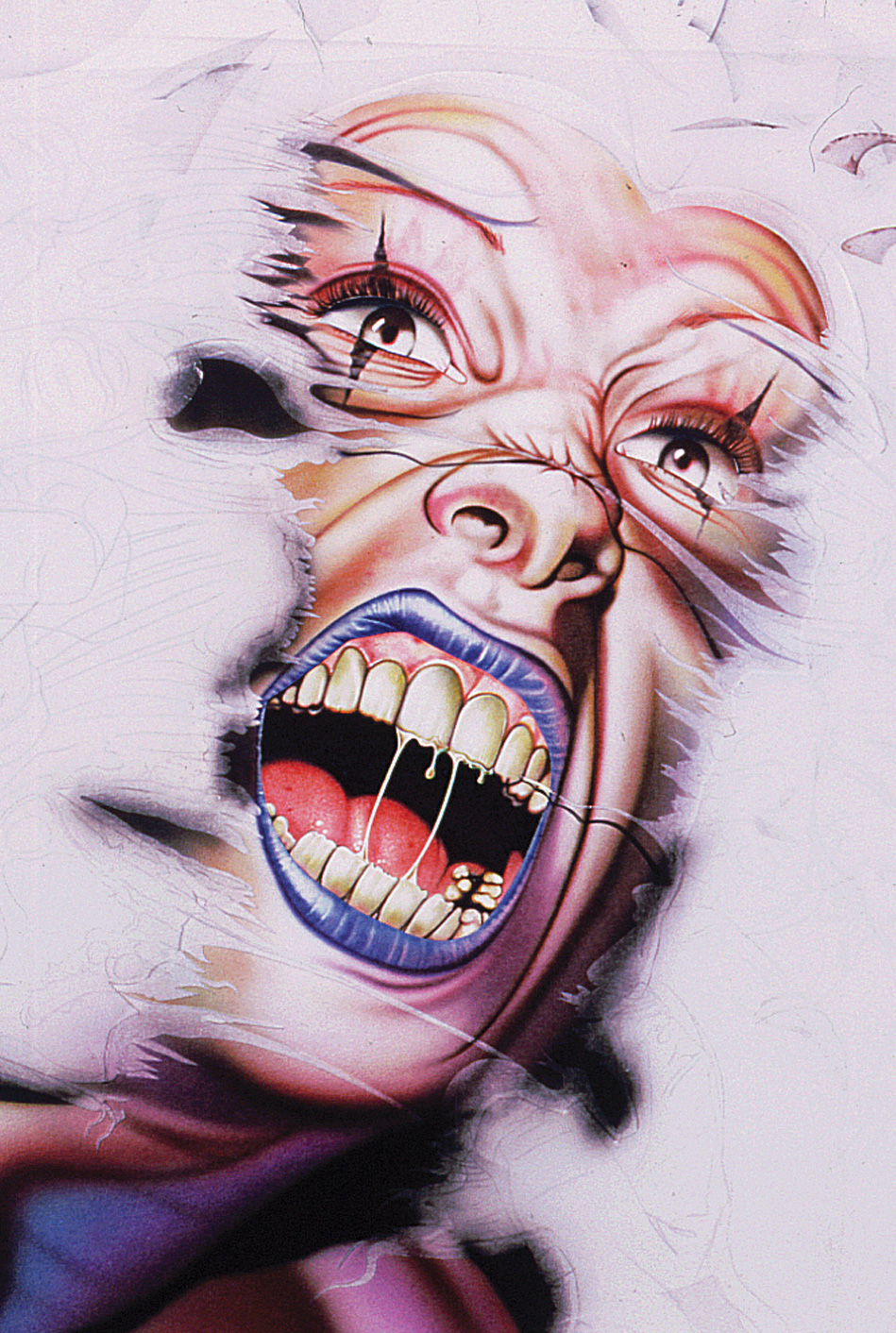
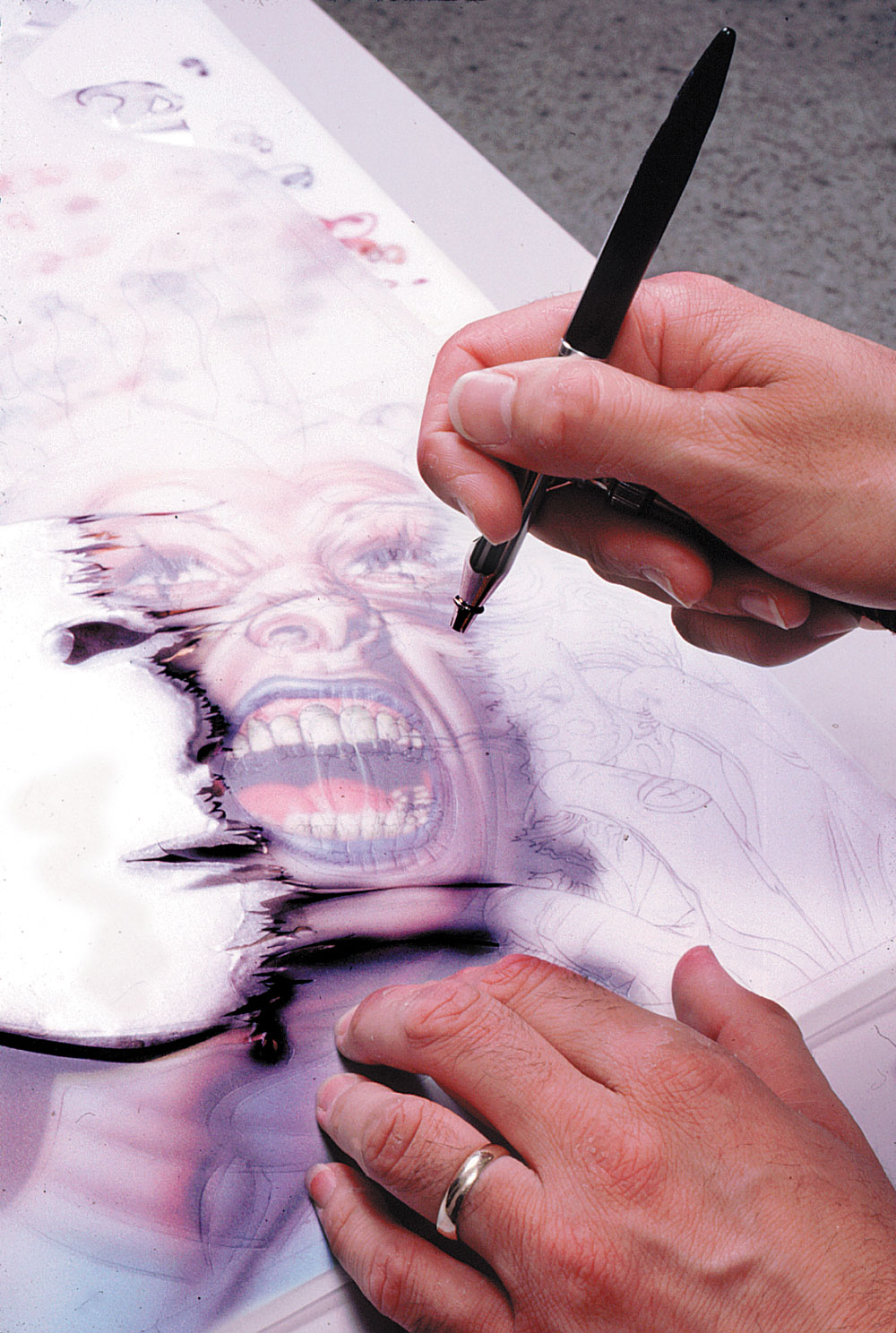
He Knows You Know, 1983 // The second single from Marillion shows the jester tearing through his mask.
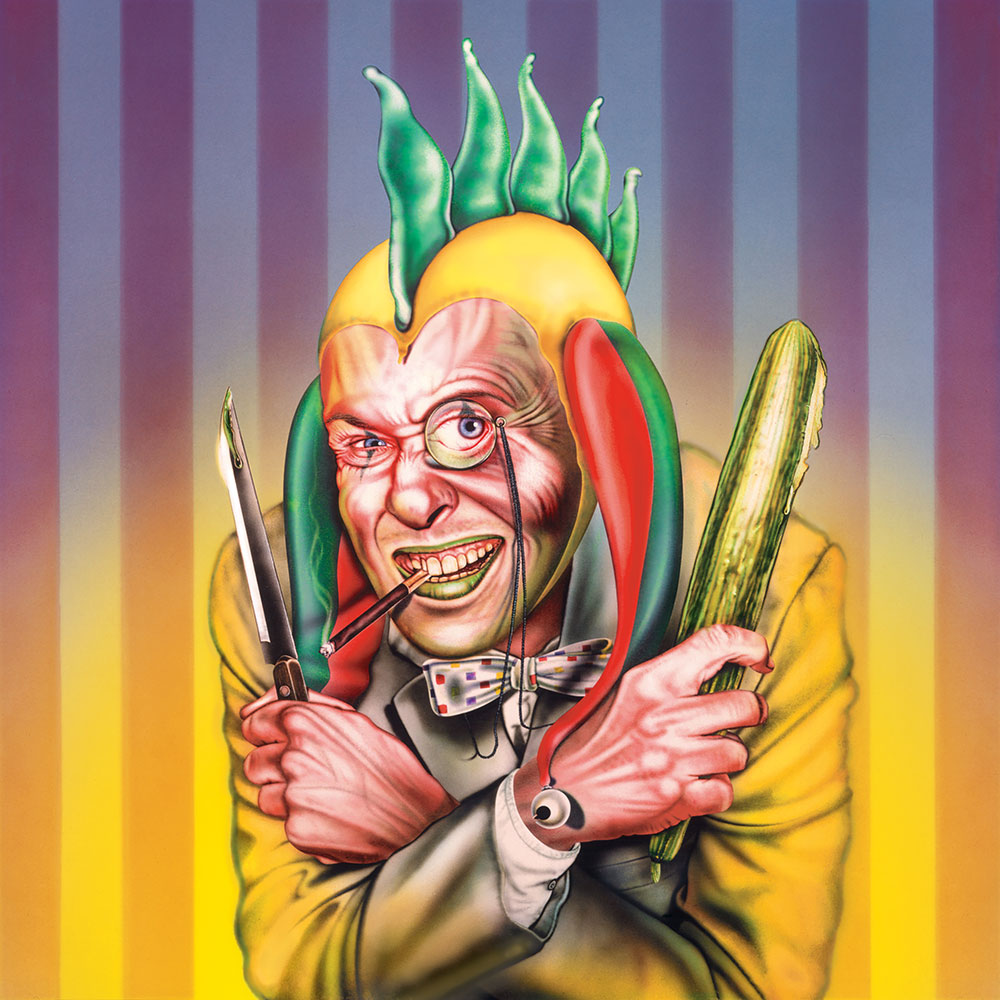
Garden Party, 1983 // The final single taken from their debut album. The song was a parody of social elitism, class snobbery and in this painting; the preparation and consumption of cucumber sandwiches!

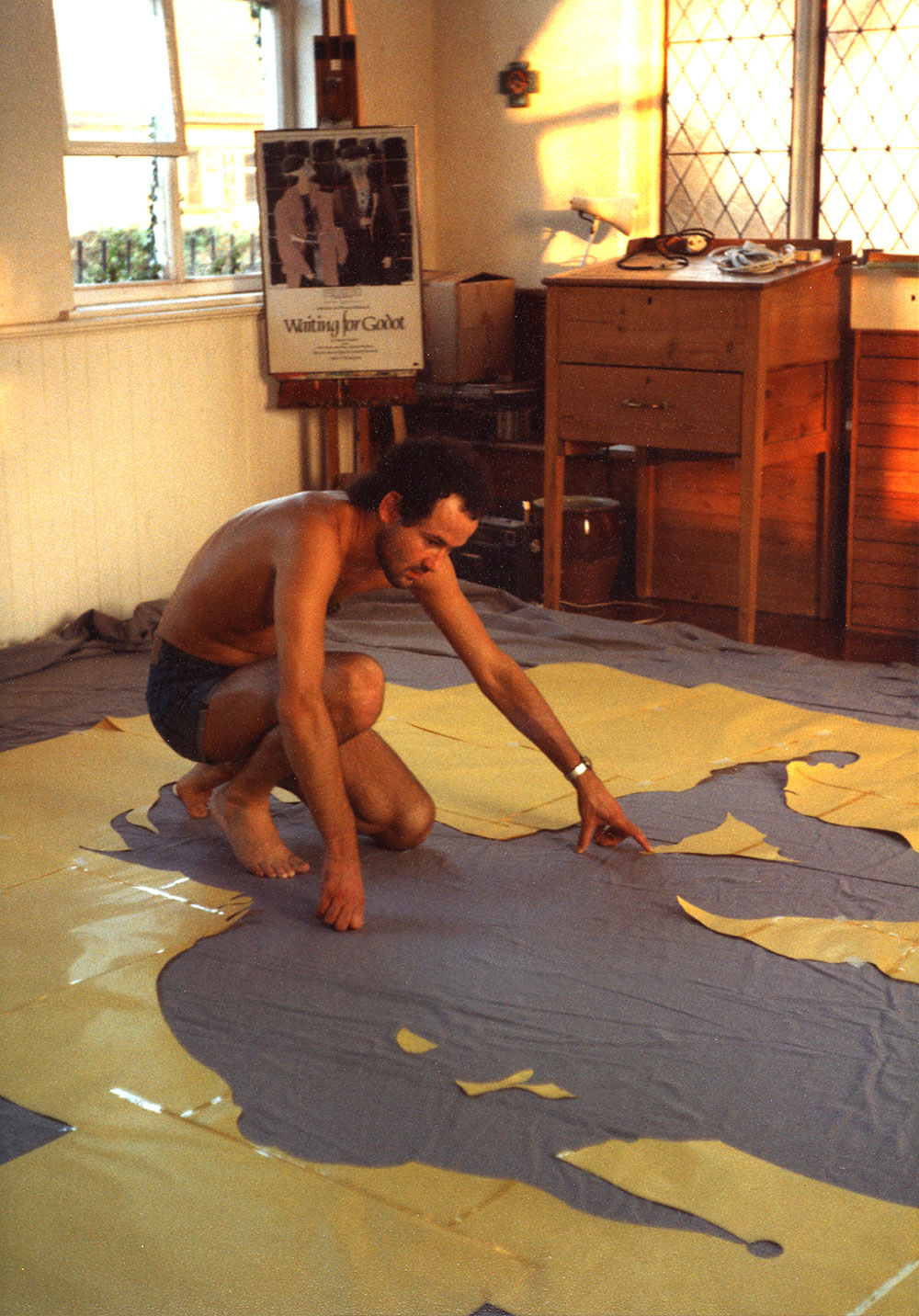
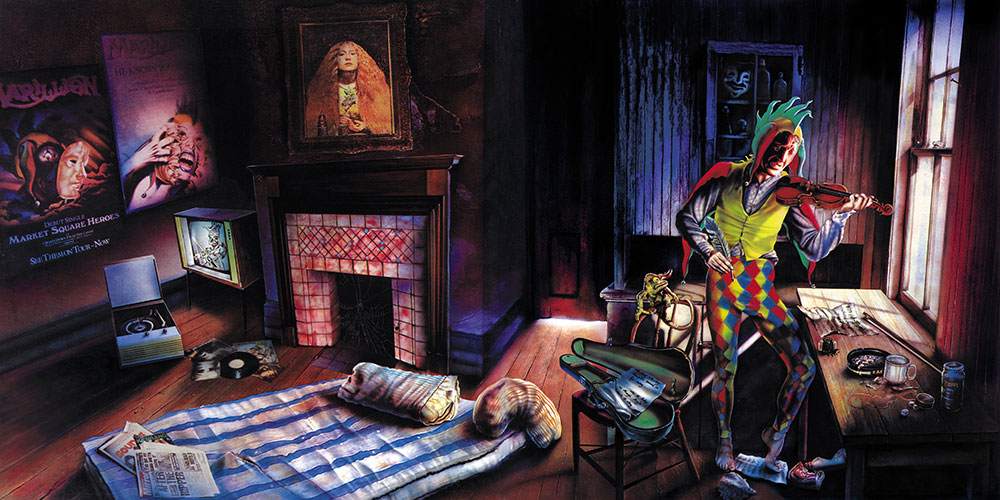
Script For A Jester’s Tear, 1983 // Marillion’s first album. The lyrics were firmly set in the everyday – not on castles in the air, Mark wanted the art to show the decay of a dingy bedsit, full of grime and damp patches. A chameleon sits on the chair carefully watching the discarded lyrics pile up with the fag ash and spilt coffee. A spider’s web hangs in the gloom of an unused fireplace, a flickering TV casts faint light over an old, stained mattress in the back room. The jester would become the band’s enduring trademark for those first few years of Marillion’s career.
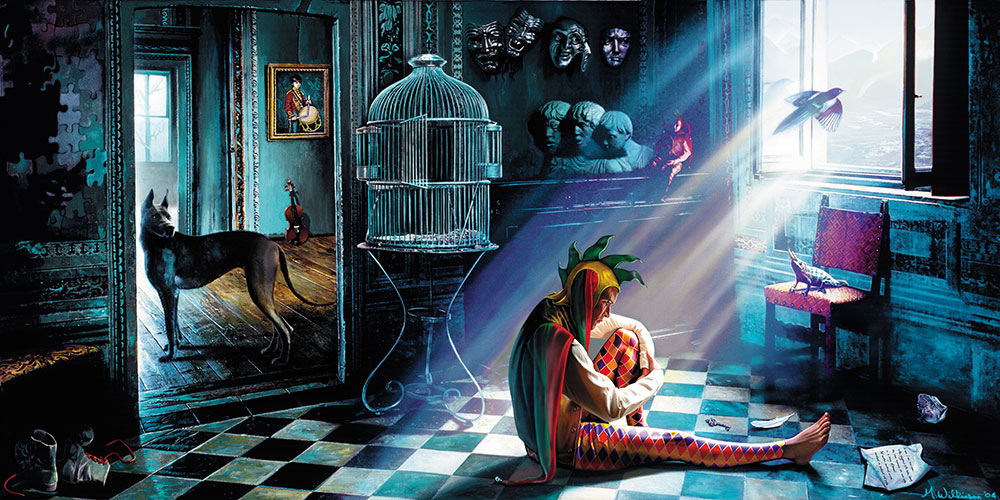
The Fool, 2004 // A Marillion fan in New York commissioned Mark to ‘re-imagine’ the Script For A Jester’s Tear album art in a different way. The room, once grand, now slightly shabby, is lit by sunlight streaming through a window. The Jester sits alone on the floor, a black dog symbolising his dark, reflective mood. On the floor is a key to the cage and also a white feather, which in dreams symbolises innocence, or a fresh start – maybe a journey.
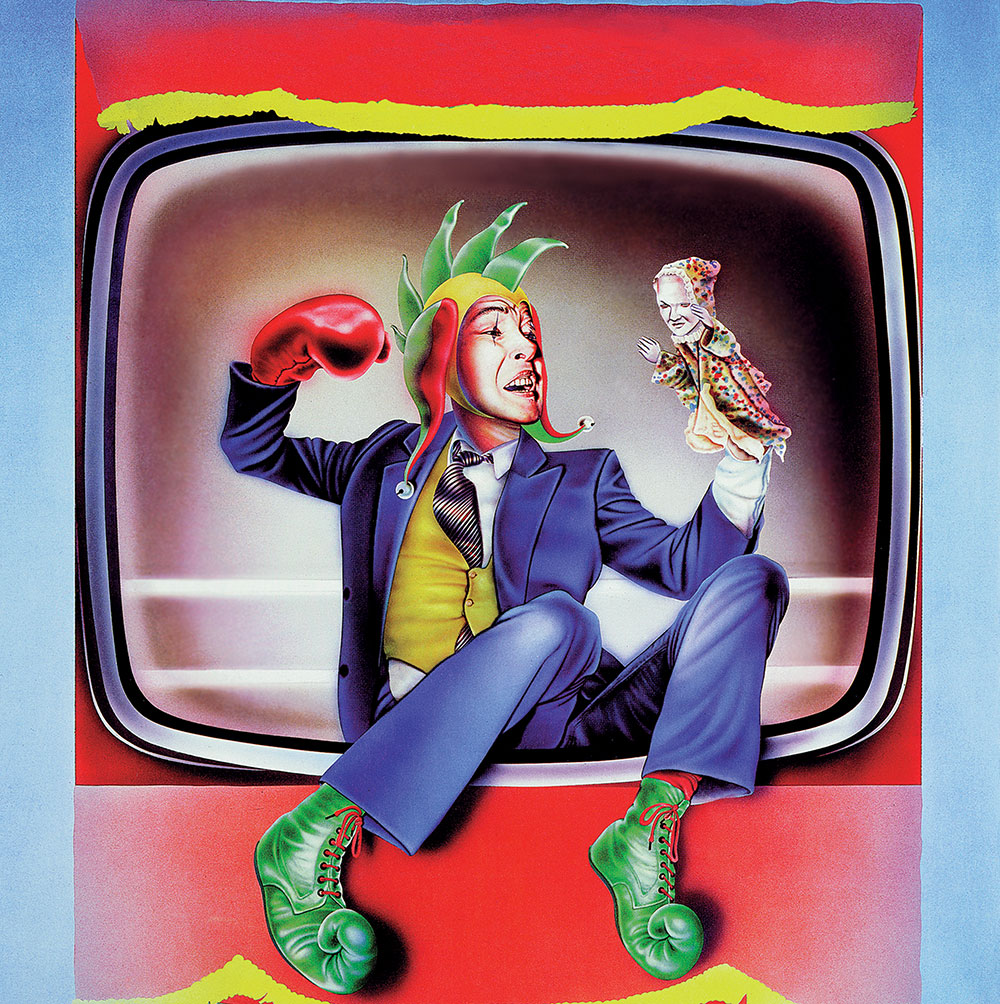
Punch And Judy, 1984 // The first single from Marillion’s second album Fugazi.
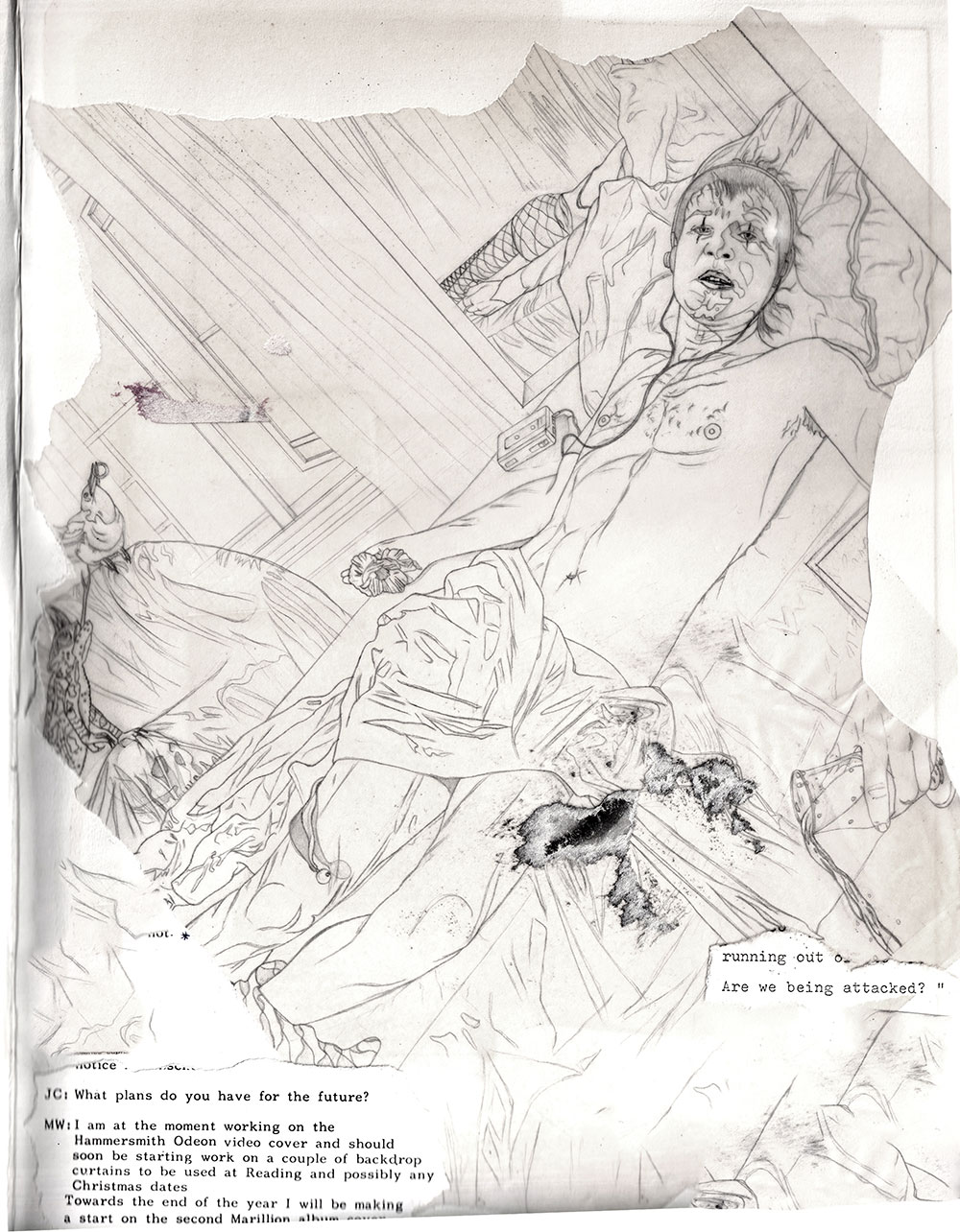

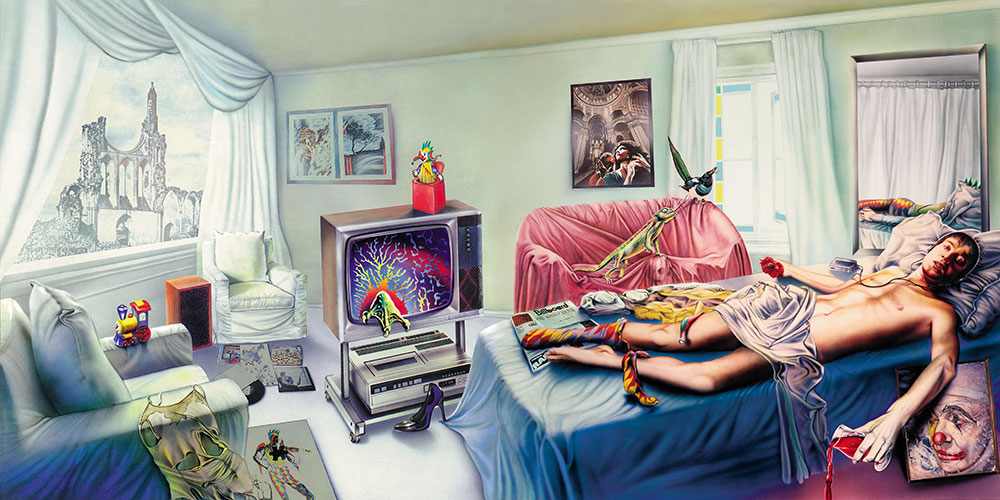
Fugazi, 1984 // Marillion’s second album. The word came from the book ‘Nam’, by Mark Baker – slang for ‘all screwed up’ in the field of battle. However, Fugazi the album, certainly from the perspective of the artwork, was to advance the story of the Jester as anti-hero. The setting is a bright glossy hotel room and this time the jester is losing control. It’s a Faustian pact. You gotta say yes to another excess!
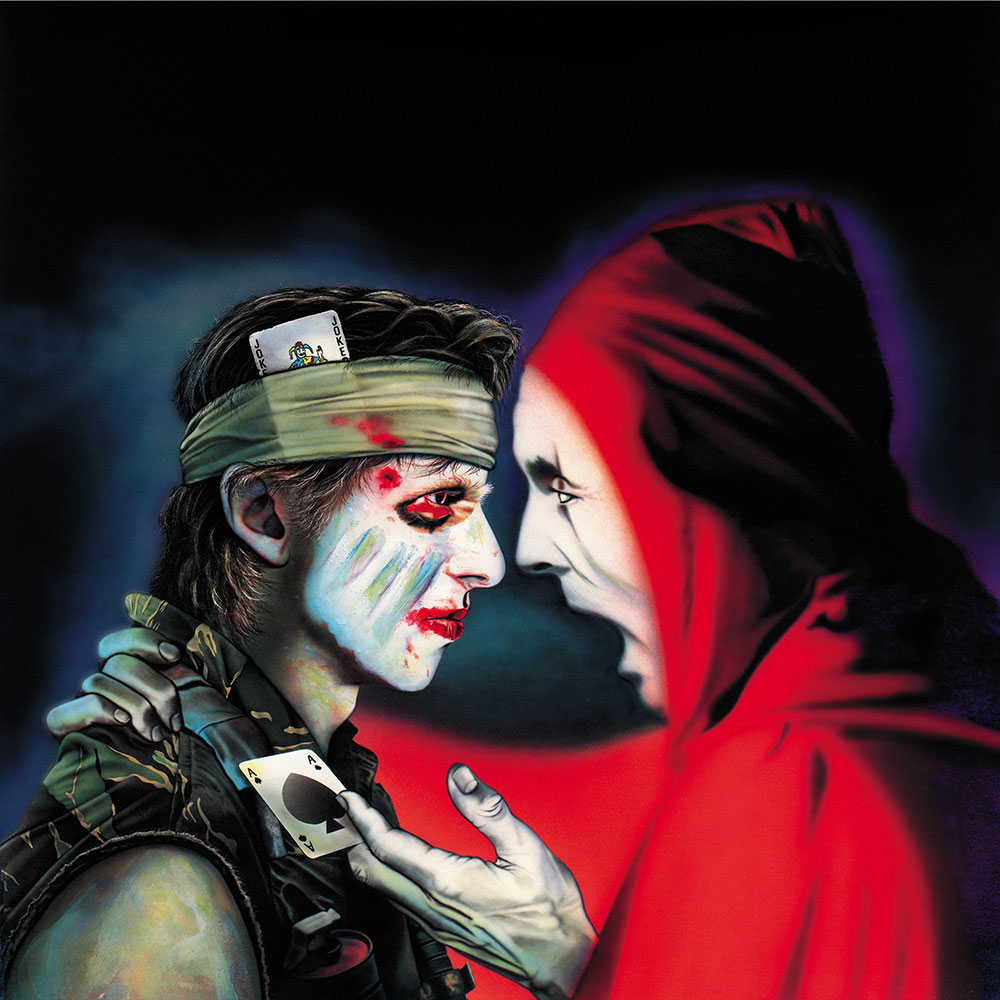
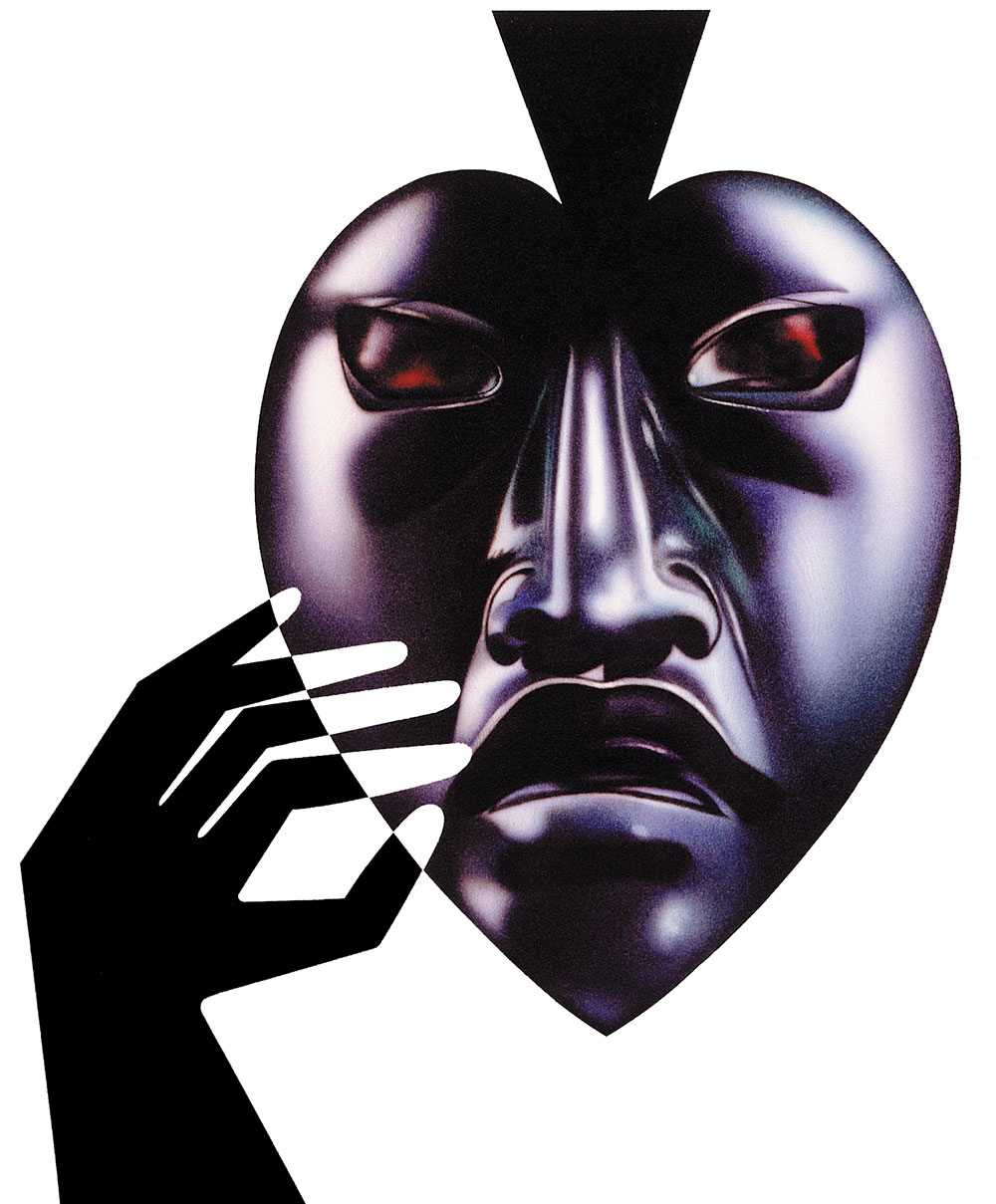
Assassing, 1984 // The second single taken from Fugazi. It dealt with psychological warfare and used the symbolism of a macabre ritual played out between a soldier and his nemesis.
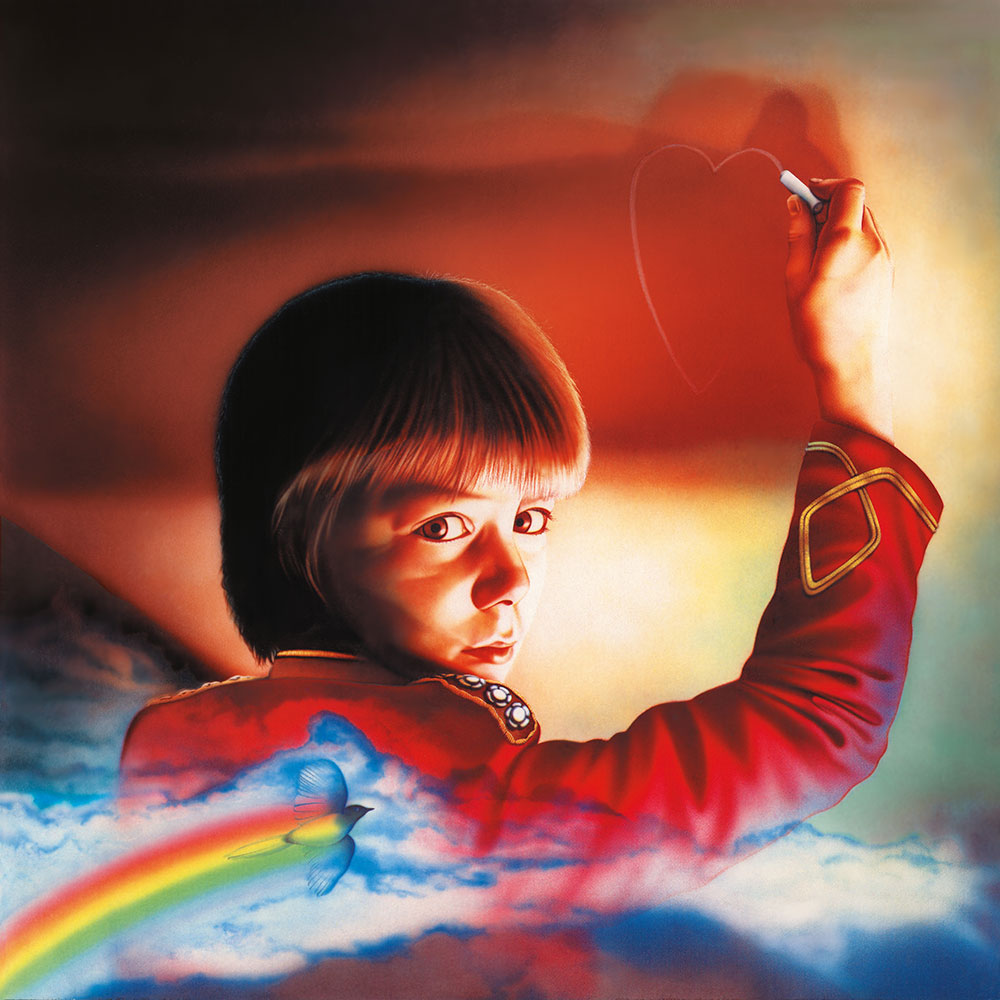
Kayleigh, 1985 // The first single taken from Misplaced Childhood. The painting introduces the ‘boy’ as the new cover image for the band, replacing the jester.
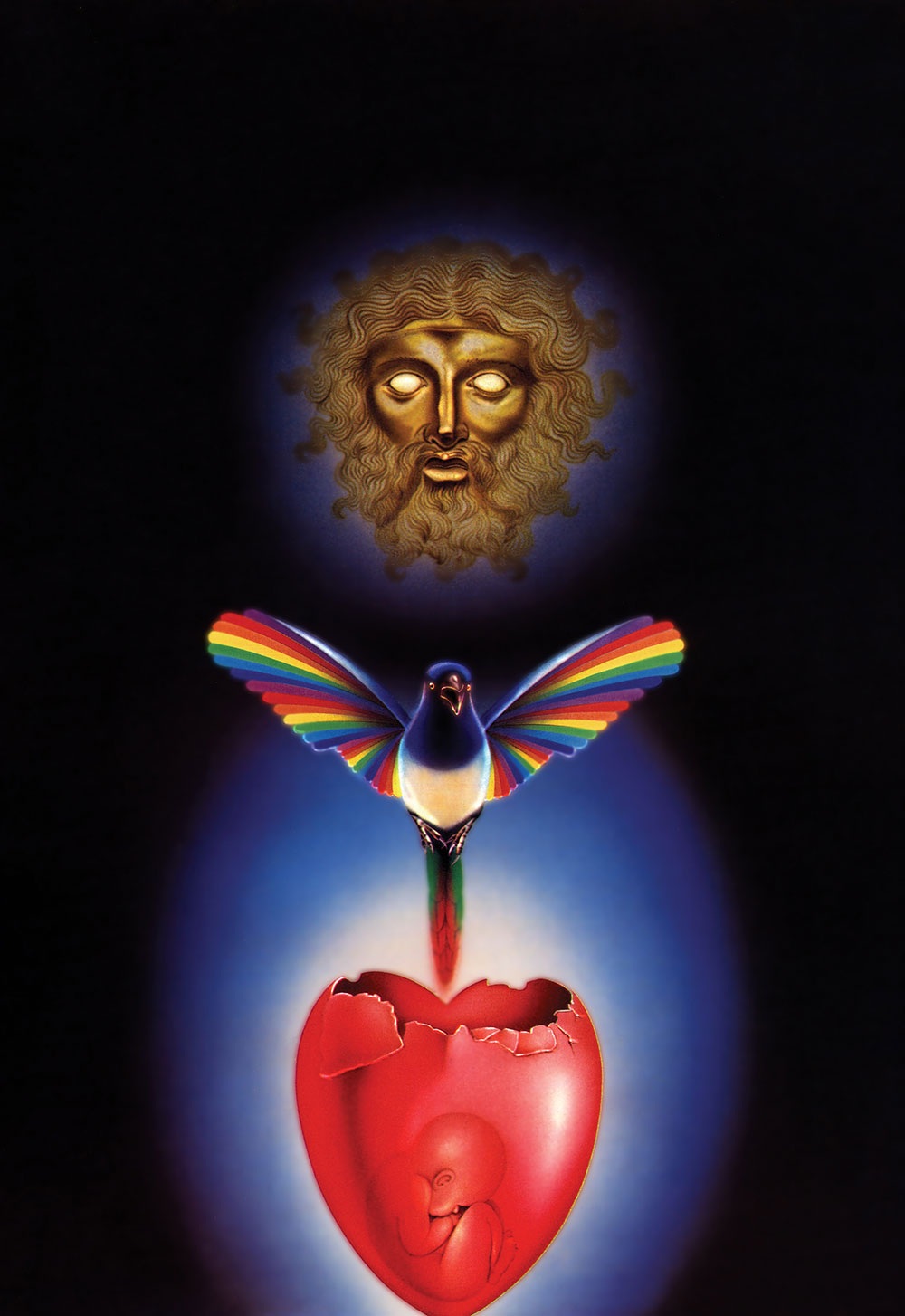

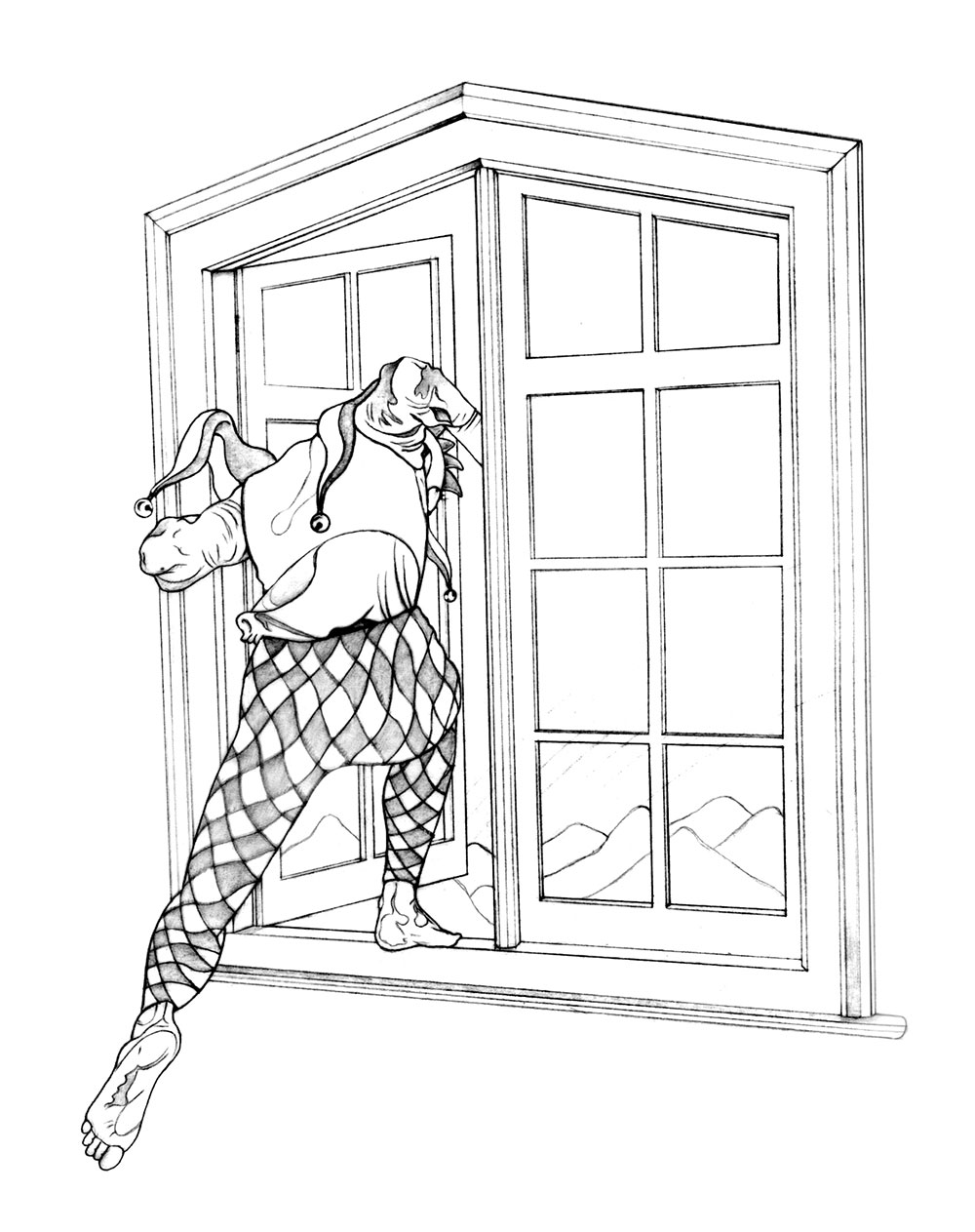
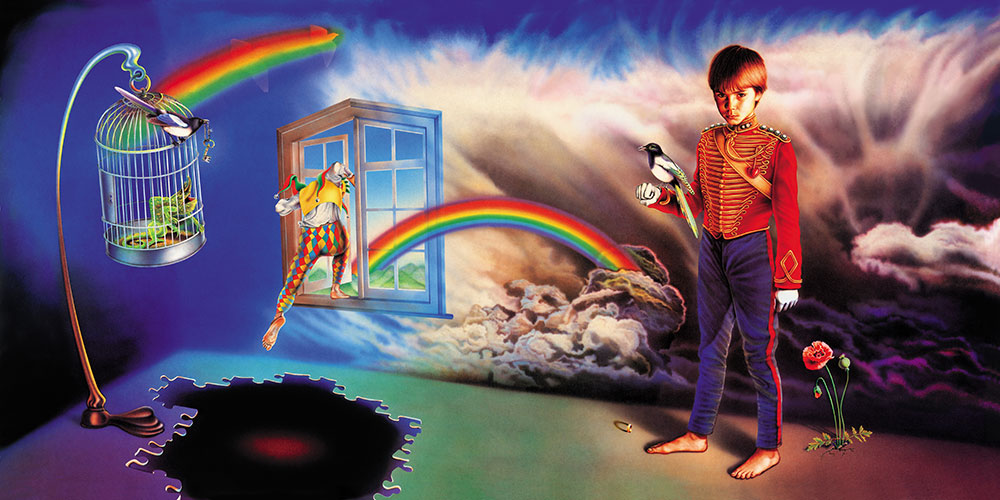
Misplaced Childhood, 1985 // Fish himself described the dreamlike vision he had which lit the spark: “Suddenly I felt a child standing behind me on the stairs. I knew he was dressed as a soldier, he vanished as soon as he’d entered the corner of my eye”. Mark had read many books by Hermann Hesse in his youth, and remembered the novel ‘Demian’. He suggested the boy here could have that same ‘mark of Cain’ as described by Hesse – an indefinable presence that separates or ‘marks’ him out from the crowd.
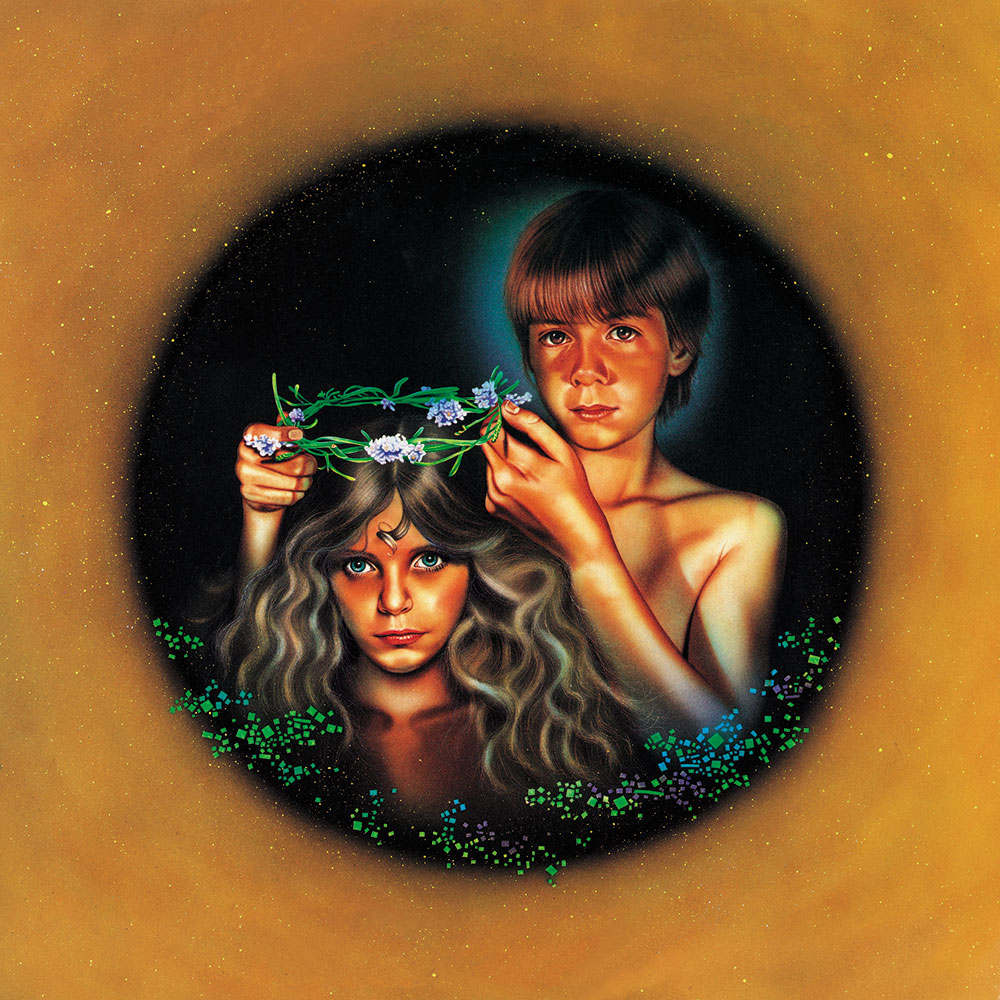
Lavender, 1985 // The second single from Misplaced Childhood based on a nursery rhyme. The painting illustrates the innocence of childhood.
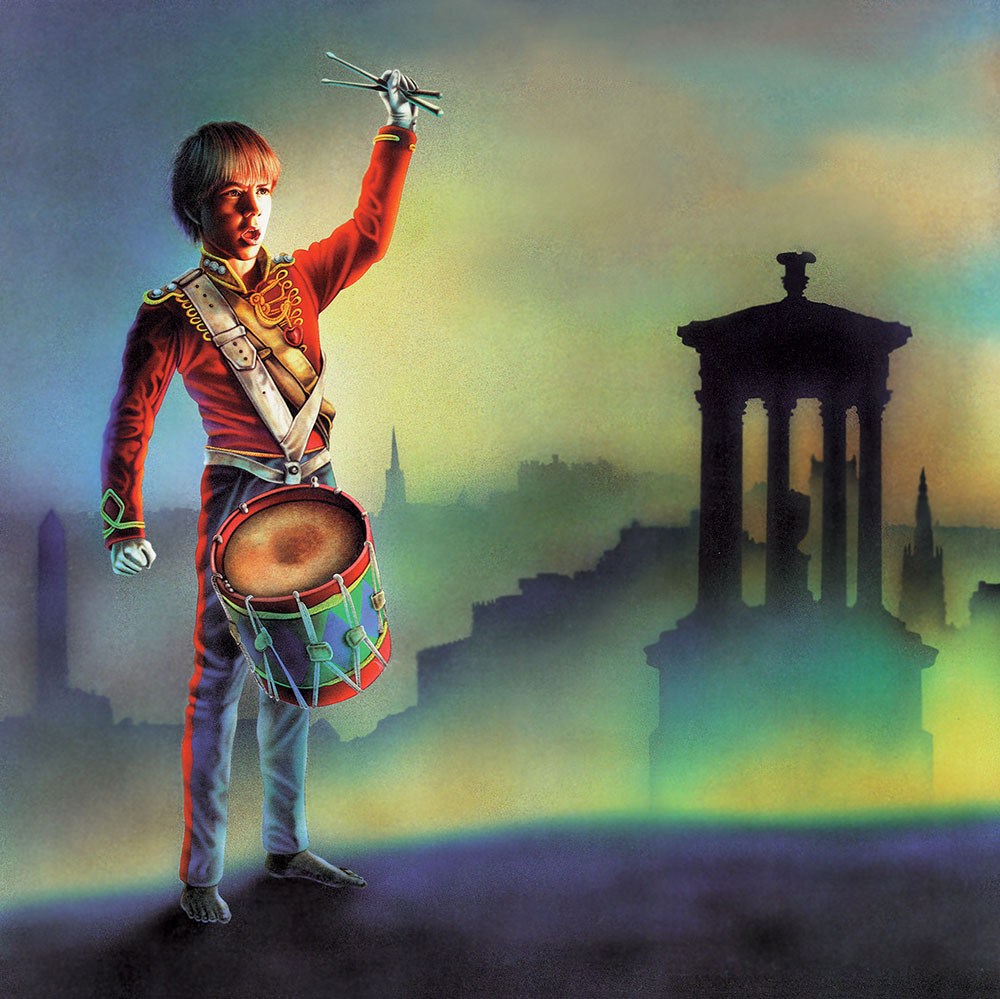
Heart of Lothian, 1985 // The third single taken from Misplaced Childhood. A rallying cry to celebrate Fish’s homeland.
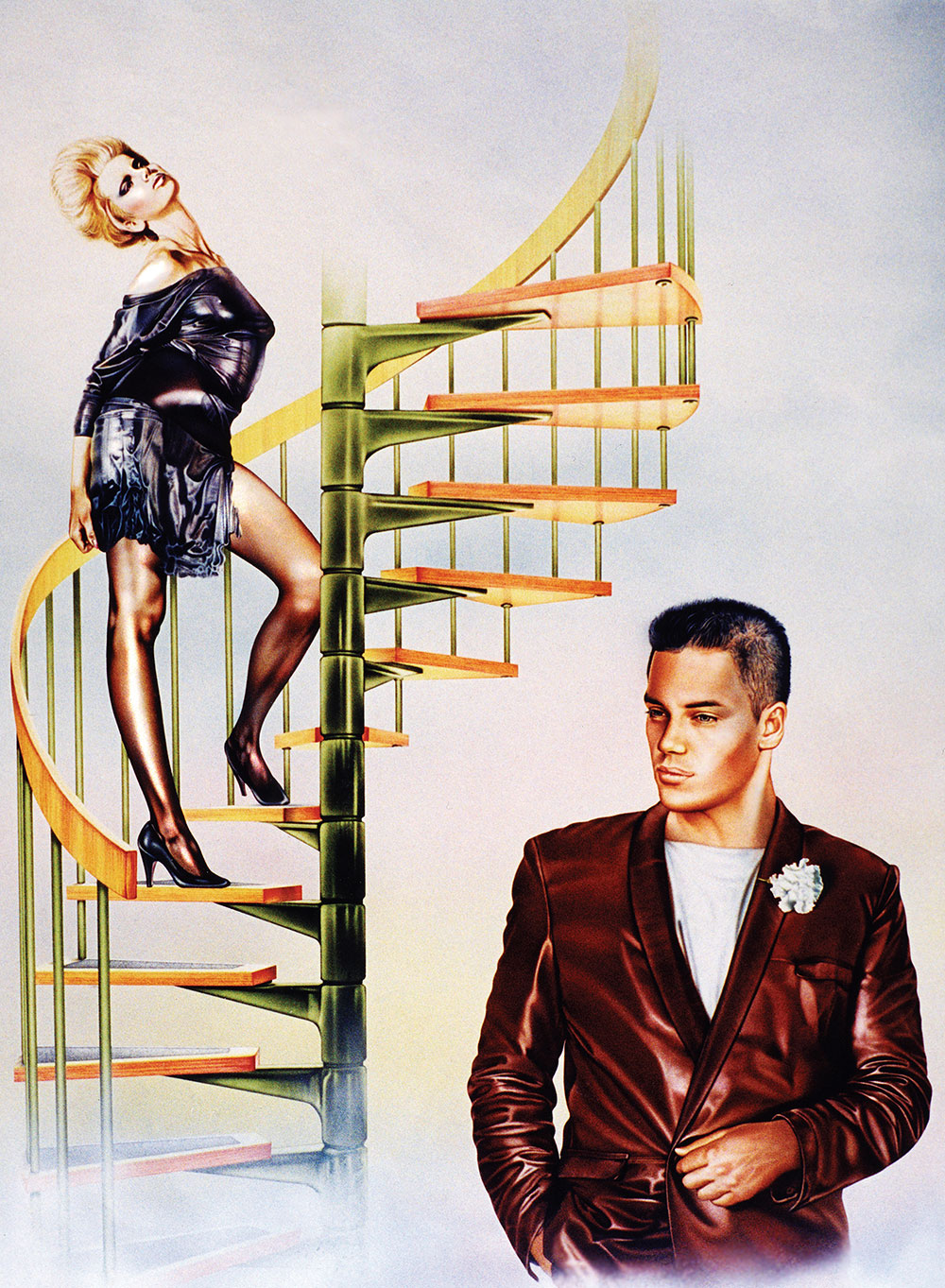
Lady Nina, 1985 // First released as the B-side to the #2 UK hit single ‘Kayleigh’, rush-released in the United States by Capitol Records in April 1986. Mark was asked if he had anything in his portfolio they could use as there wasn’t time to produce a new painting. This was a sample piece for an artist’s agent he was with at the time called ‘Aircraft’, who specialised in airbrush art.
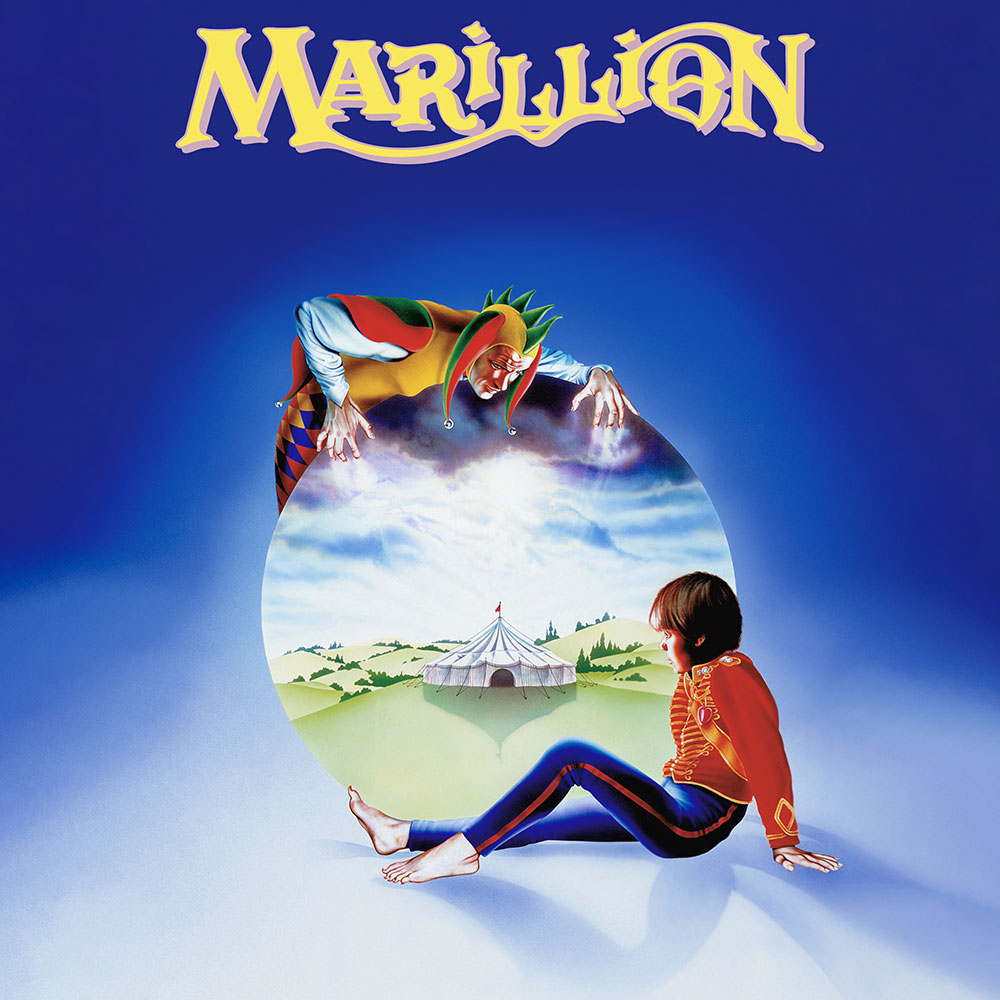
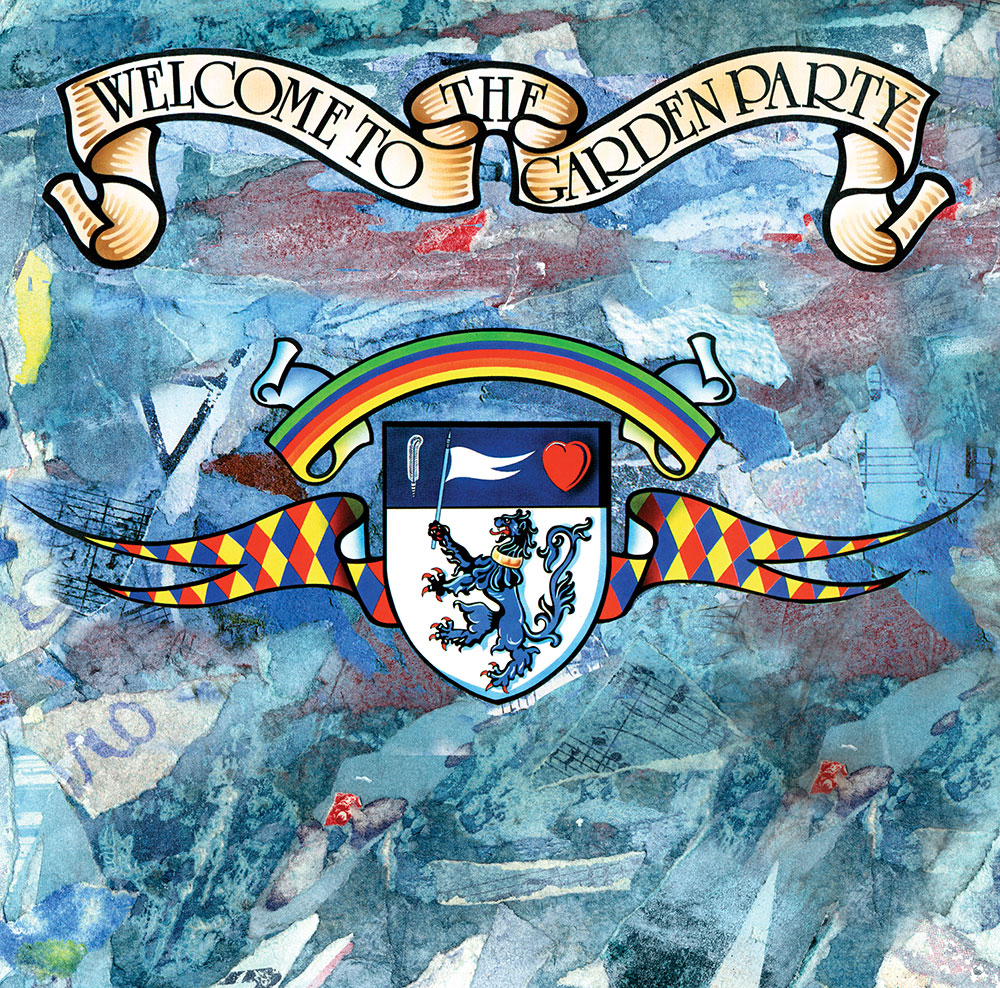
Welcome To The Garden Party, 1986 // Initially created for a poster for Marillion’s concert at Milton Keynes Bowl. It was also used as the cover art for an EP released exclusively in Germany to accompany a series of concerts the band played at festivals in that country, supporting Queen.
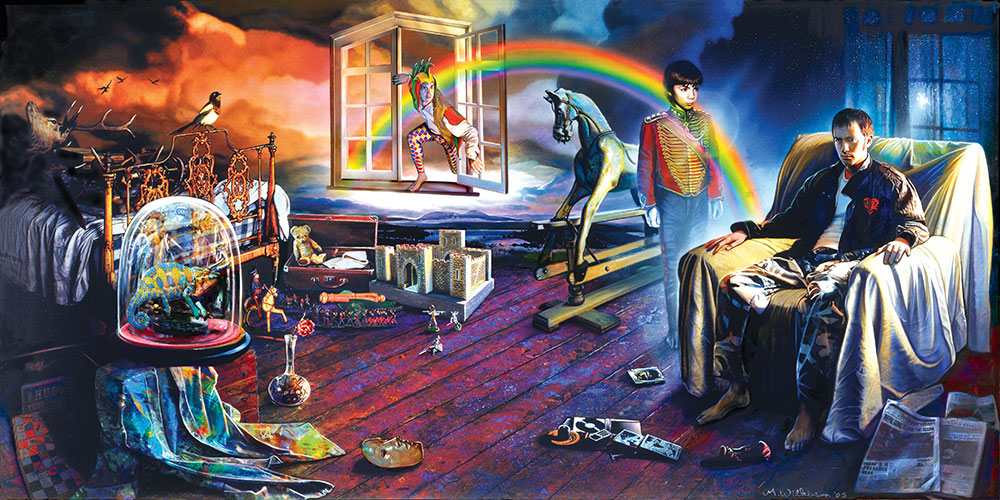
Return To Childhood, 2005 // Painted to celebrate the anniversary of Misplaced Childhood. Fish went on tour to play the whole album in its entirety again. As with The Fool, Mark was asked to re-imagine the art, with the boy as a thirty year old man. A dreamlike vision appears, then vanishes in a few seconds. The attic he’s in, appears to change. His boyhood spirit stands beside him in a brightly coloured rainbow, while the walls dissolve. The jester appears through an open window above the castle and toy soldiers. The whole dream-like experience invokes memories of childhood, when everything seemed possible.


Clutching At Straws, 1987 // Marillion’s fourth album introduces a new character ‘Torch’, a dark angel who appears in various guises. He could be seen as a portent of self-destruction, or patron saint of drinkers, at the end of the bar. Mark based him on a mix of Vladimir Mayakovsky, the Russian poet/actor (purely because of his hard stare), and Captain Willard as he emerges out of the swamp in Apocalypse Now!
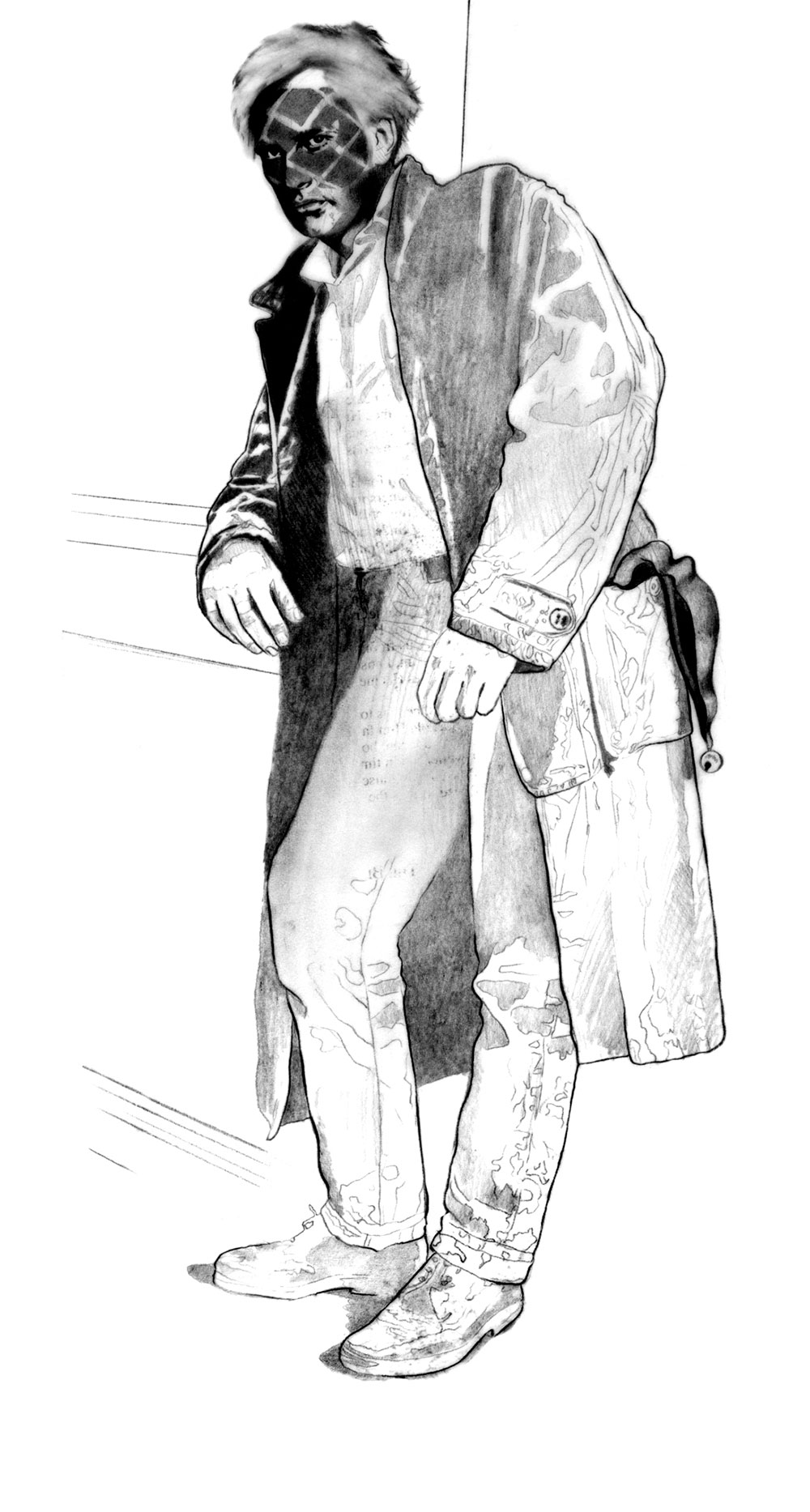
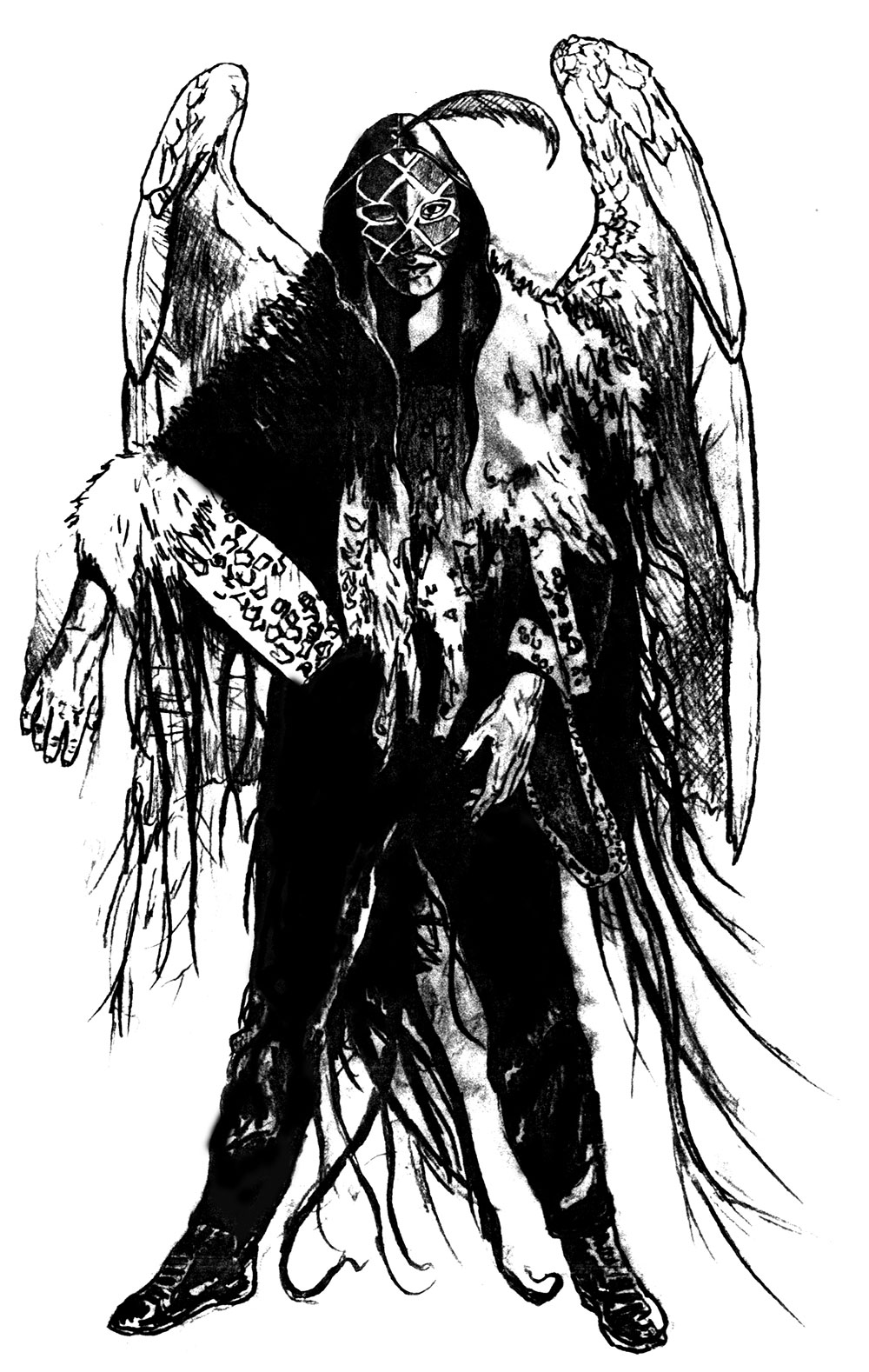
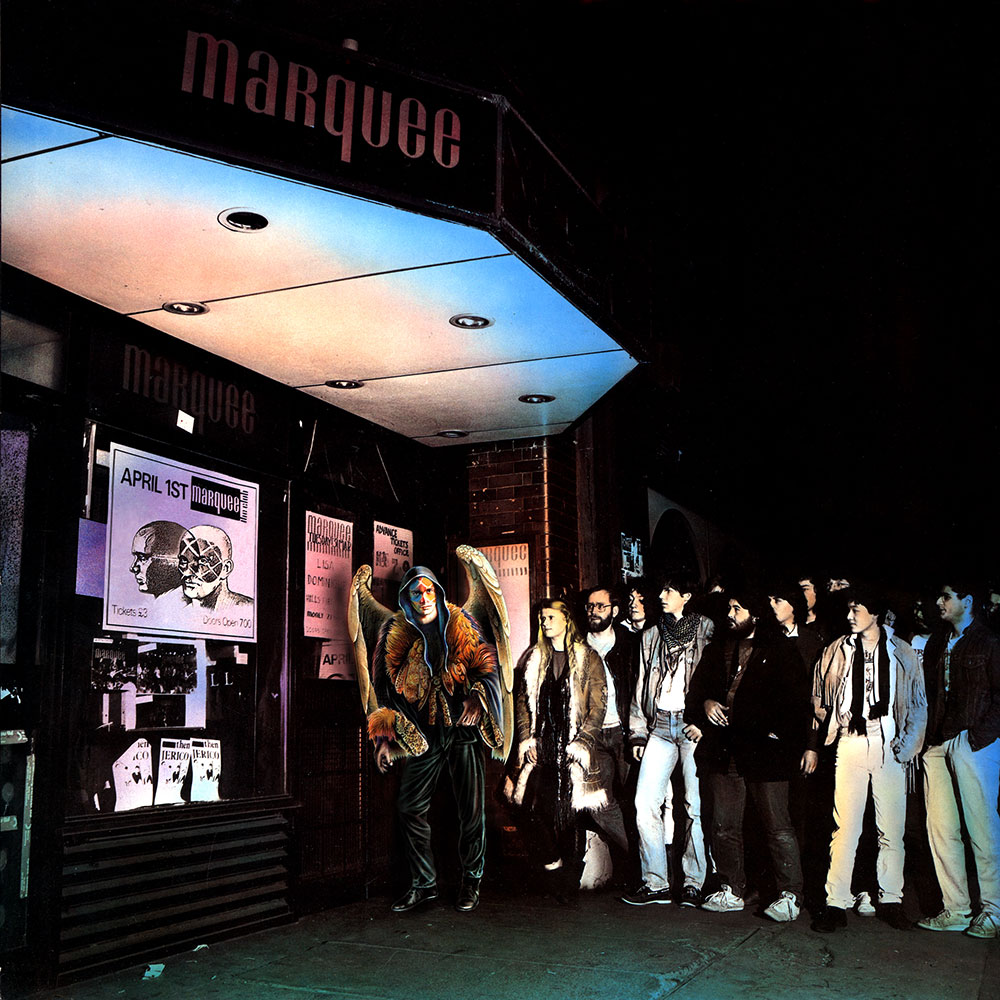
Incommunicado, 1987 // The first single taken from Clutching At Straws was the start of an imperfect experiment. To try and move away from the highly coloured album art of Marillion’s previous three albums, Mark opted for a more muted colour palette to suit the subject matter. The illustration was a mix of collage and black and white photography, tinted by hand. The row of fans outside The Marquee Club had been photographed queuing outside around 5:30am one morning. The angel was airbrushed in ink, cut out and stuck on the photo to create a collage.
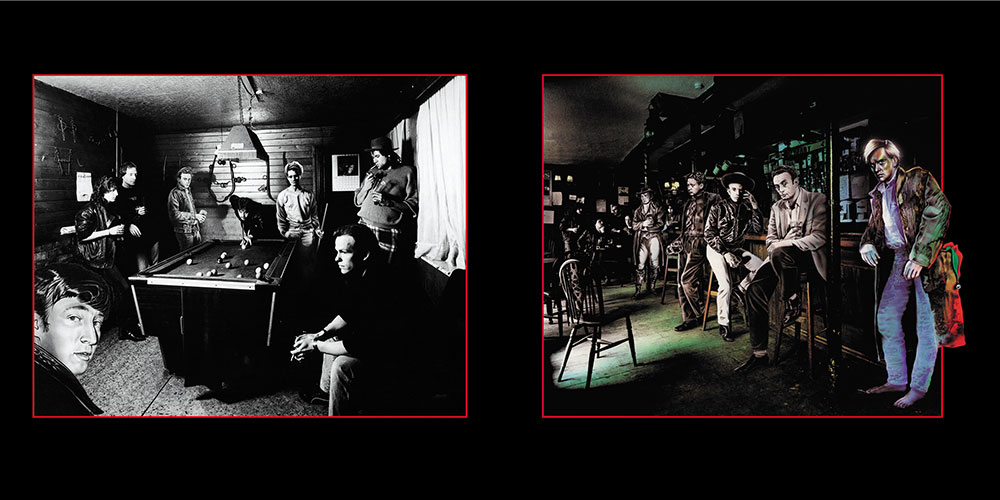
Clutching At Straws, 1987 // It was the first album for Marillion that was a single sleeve, rather than a gatefold (shown here front and back). The idea was to create a bar filled with heroes from music, poetry and literature. They were painted in monochrome then collaged onto a photograph,‘Torch’ being the only figure in full colour. Unfortunately, the list Mark had been given had to be shortened, due to a tight deadline.
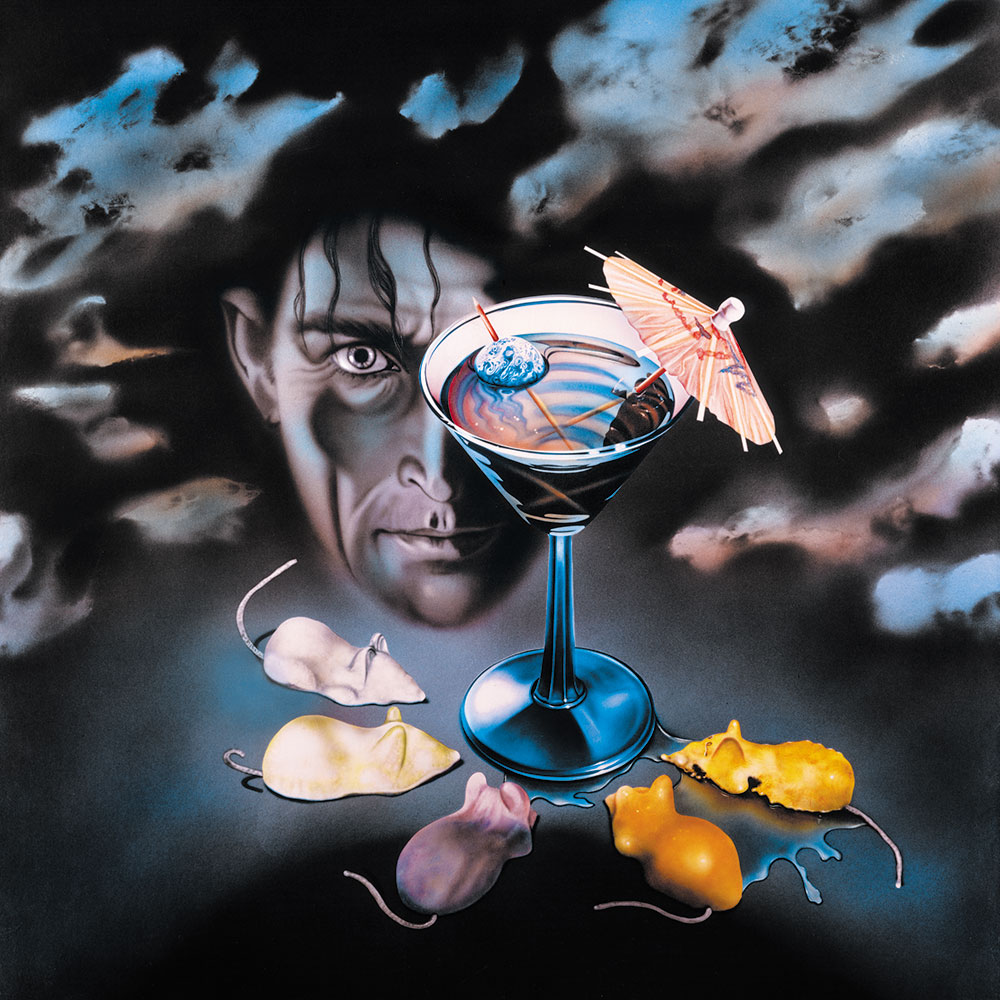
Sugar Mice, 1987 // This cover art depicts a British worker leaving his family to emigrate to the U.S. to find a job. He ends up in despair, drinking in a hotel bar in Milwaukee. The sugar mice begin to melt in the spilt alcohol. Mark abandoned the collage experiments from before, and went back to airbushed ink.
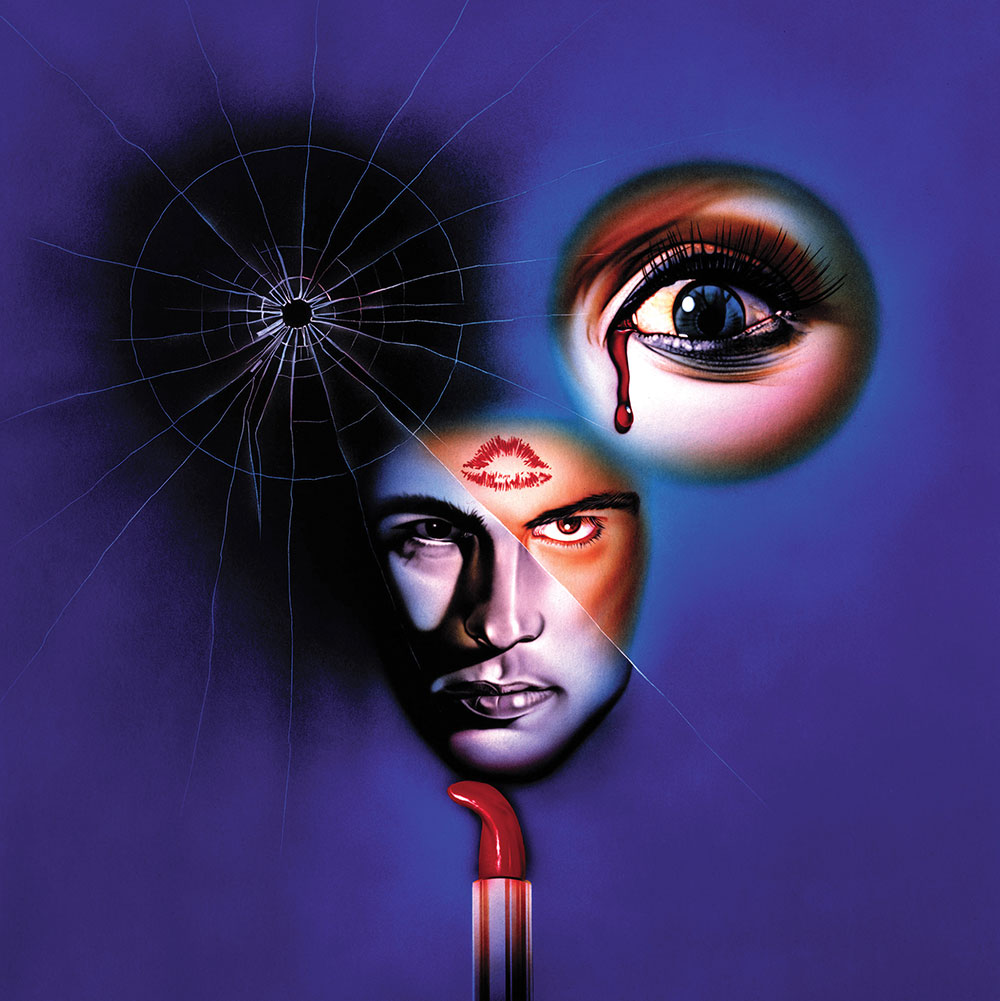
Warm Wet Circles, 1987 // The third single from Clutching At Straws.
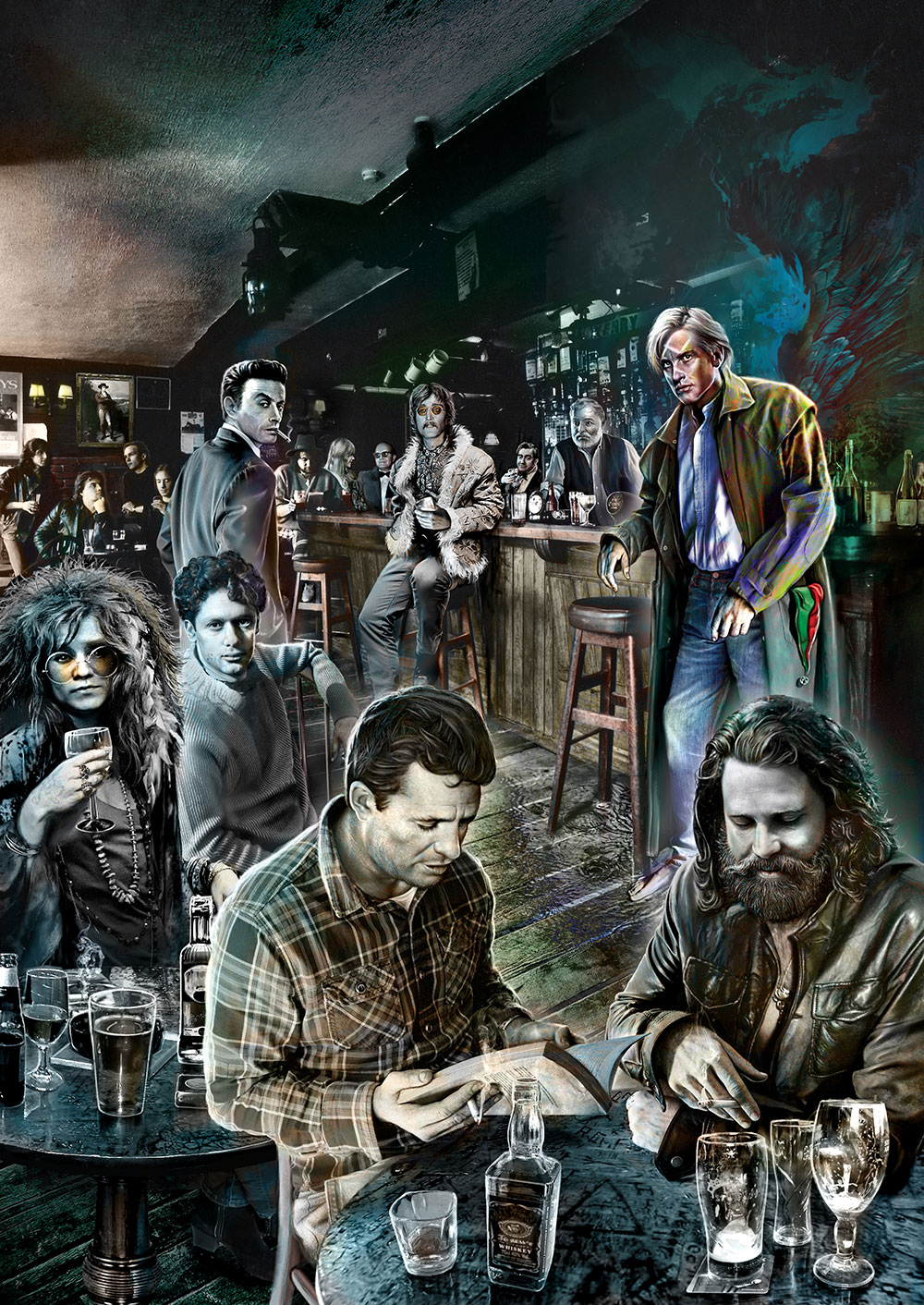
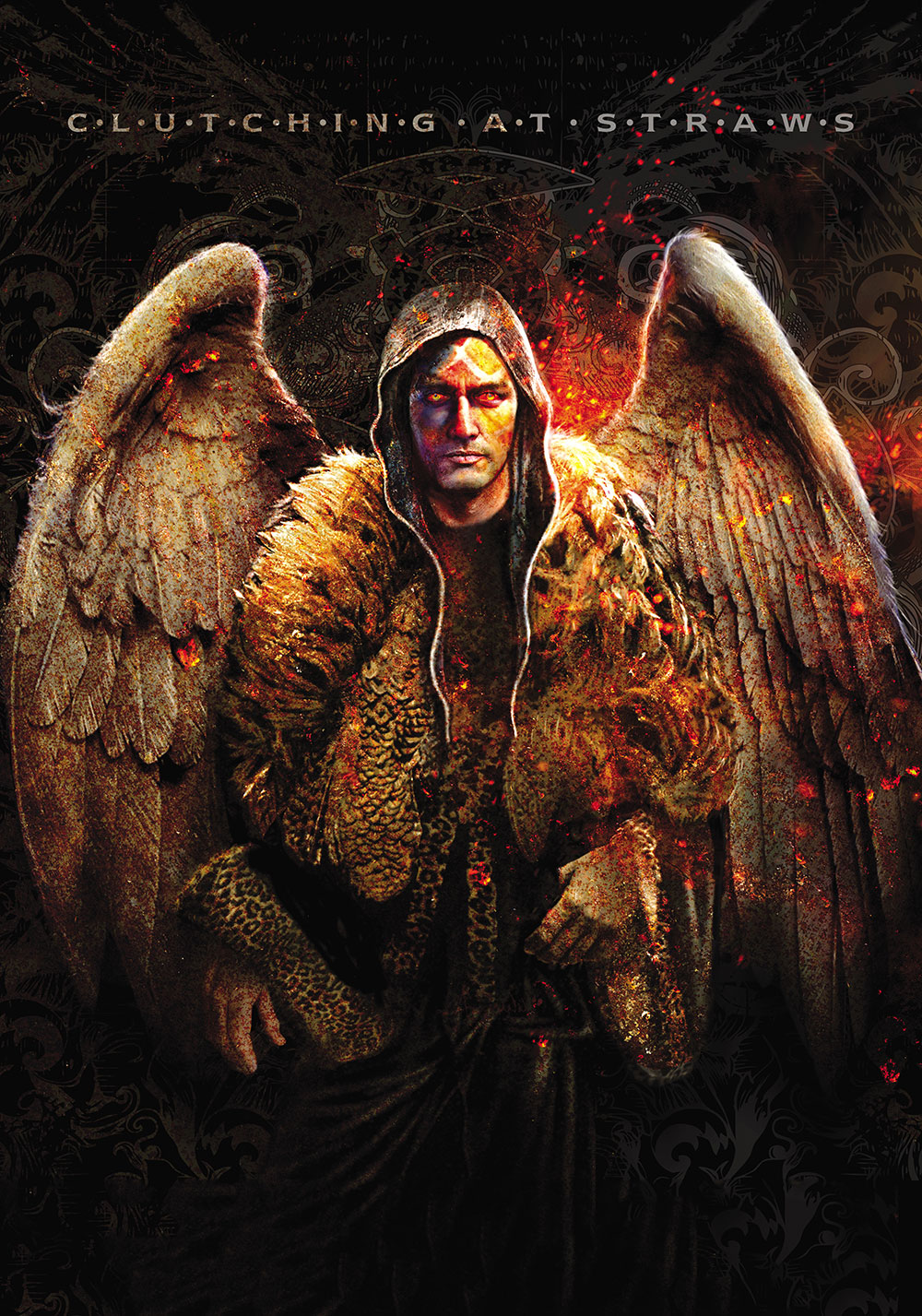
Clutching At Straws and Torch – 30th Anniversary, 2017 // Mark was never satisfied with the art for Clutching At Straws in 1987, so for the 30th anniversary he decided to redo it. This time he did manage to get all the people on the original list of characters he’d been given, plus some others, into that mythical bar room. He also reworked ‘Torch’ – the dark angel or ‘Geisterfahrer’.
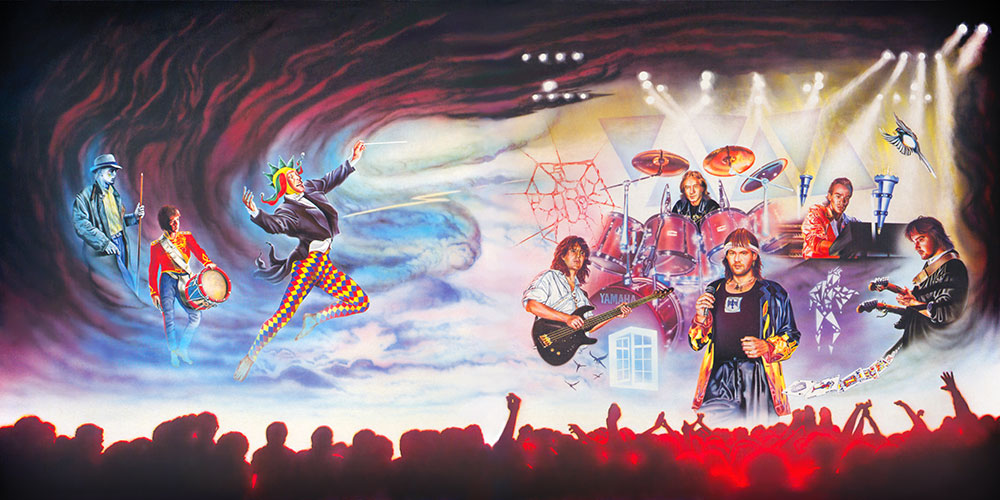
Thieving Magpie, 1988 // A live album with airbrushed portraits of the band and the three main characters of the sleeve art up to that time.
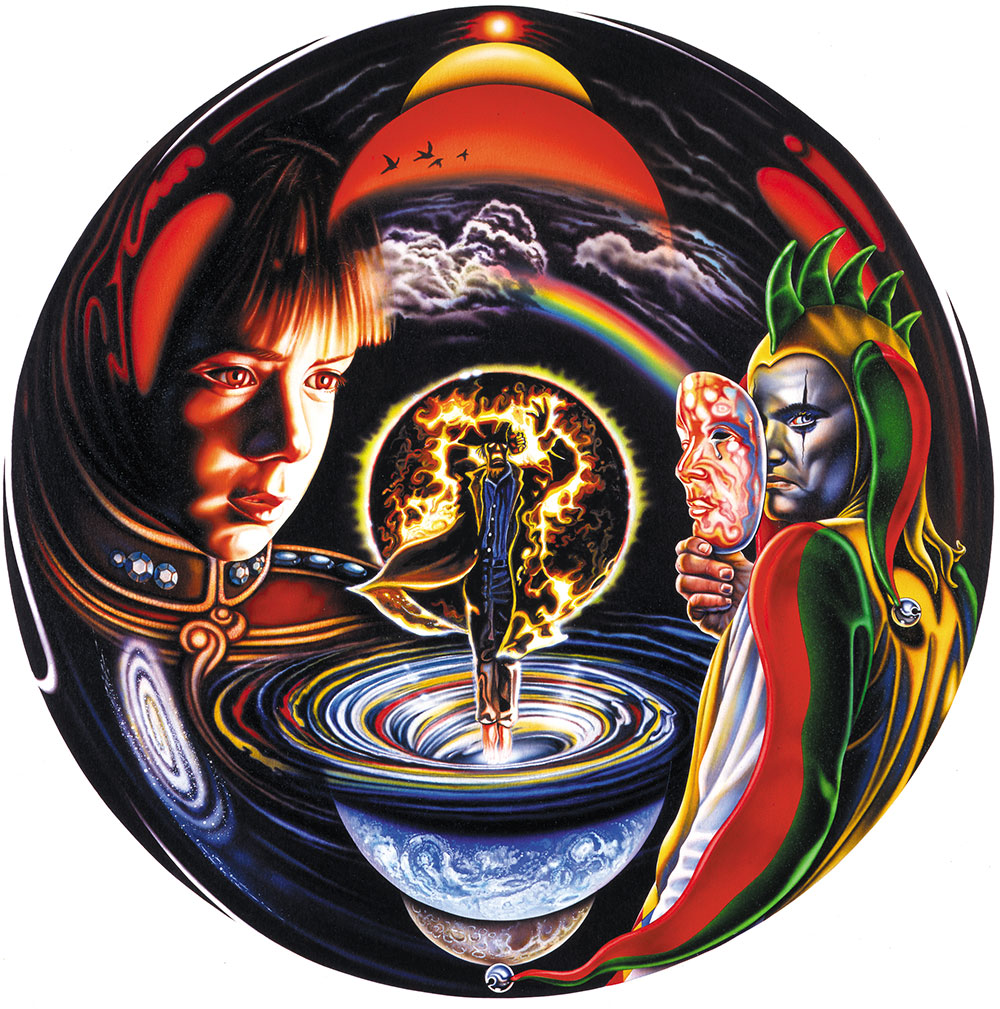
Best of Both Worlds, 1997 // This was painted for an album project that would feature the best music of the two eras of Marillion ten years after Fish had left. This illustrated the years Fish was songwriter and vocalist with them.
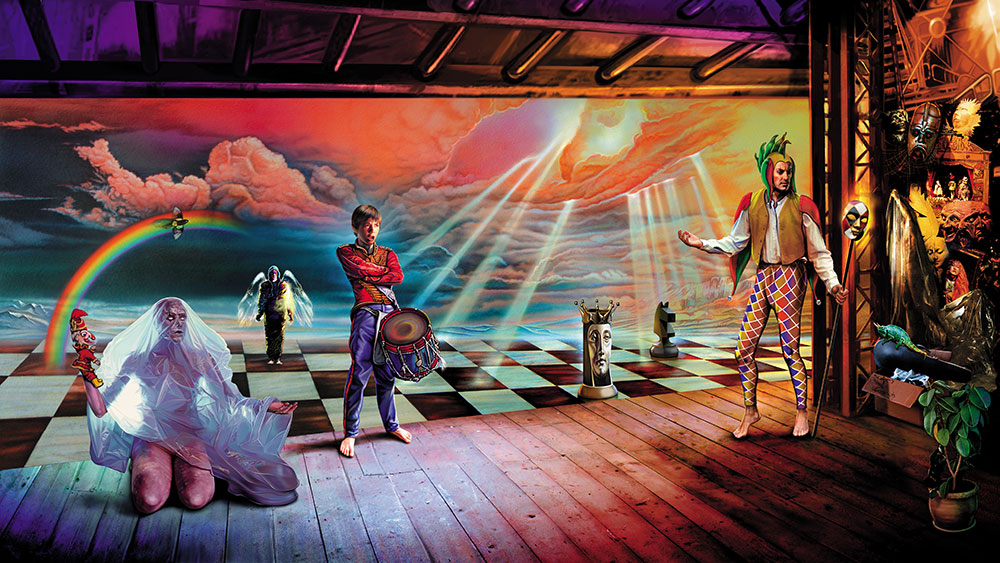
Curtain Call, 2003 // Marillion released a new CD box-set of live concerts. It was left up to Mark how he was to illustrate it; maybe imagine the band just about to perform again? Taking the main figures that had been used from past album sleeves – the jester and the boy, plus Torch from Clutching At Straws, Mark also included Incubus, a character originally from Fugazi, holding Mr. Punch. The main characters are all together one last time, on stage waiting for ‘their’ band to join them. Four characters in search of an author!
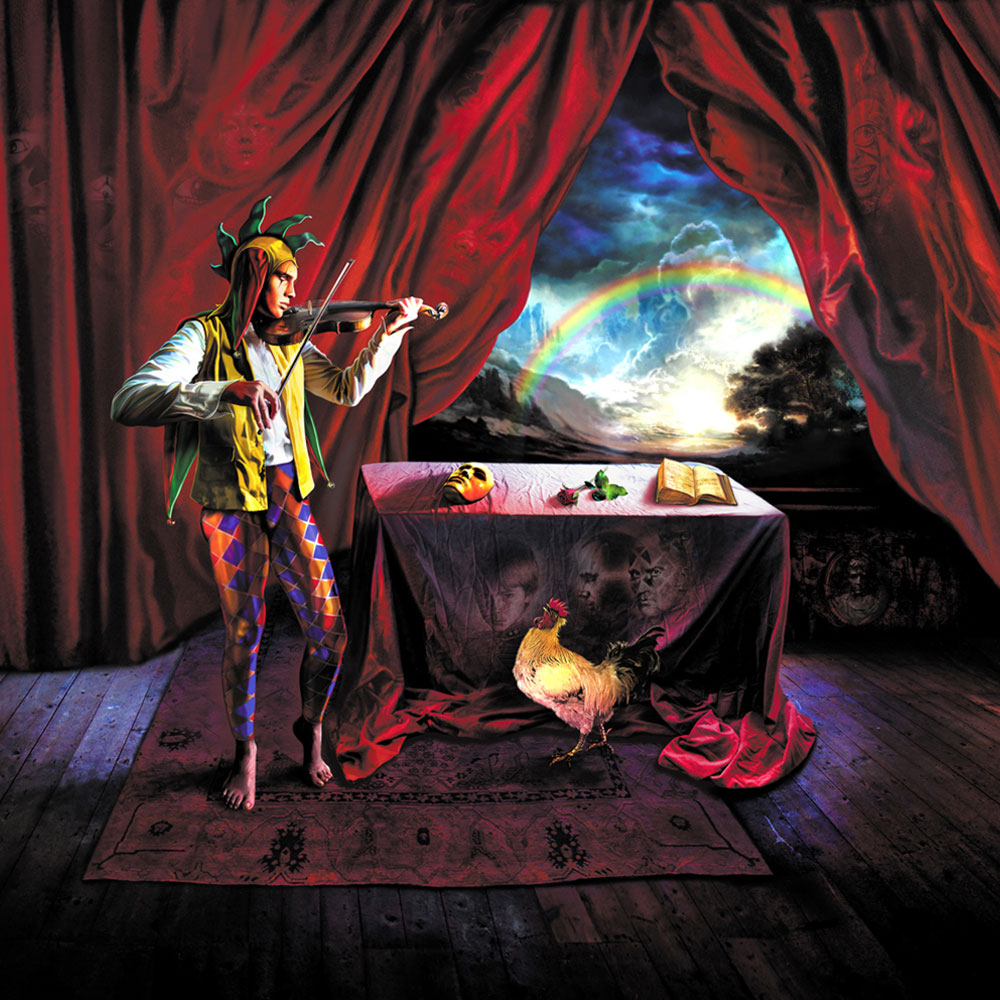
Early Stages, 2008 // Another box-set of live material from the fish-era Marillion. It’s a similar visual idea to Curtain Call in that it’s a live stage setting, only this time the jester playing his violin, has actually taken over the stage. Ghostly faces and shadows appear in the curtains draped behind him. The audience has left, and the mannequins and props come to life. The cockerel is a reference to the traditional cockade of the jester’s hat, and the comical nature of folly. The mask, the red rose and the open book of poetry are all connected to the band’s unique early visual history.
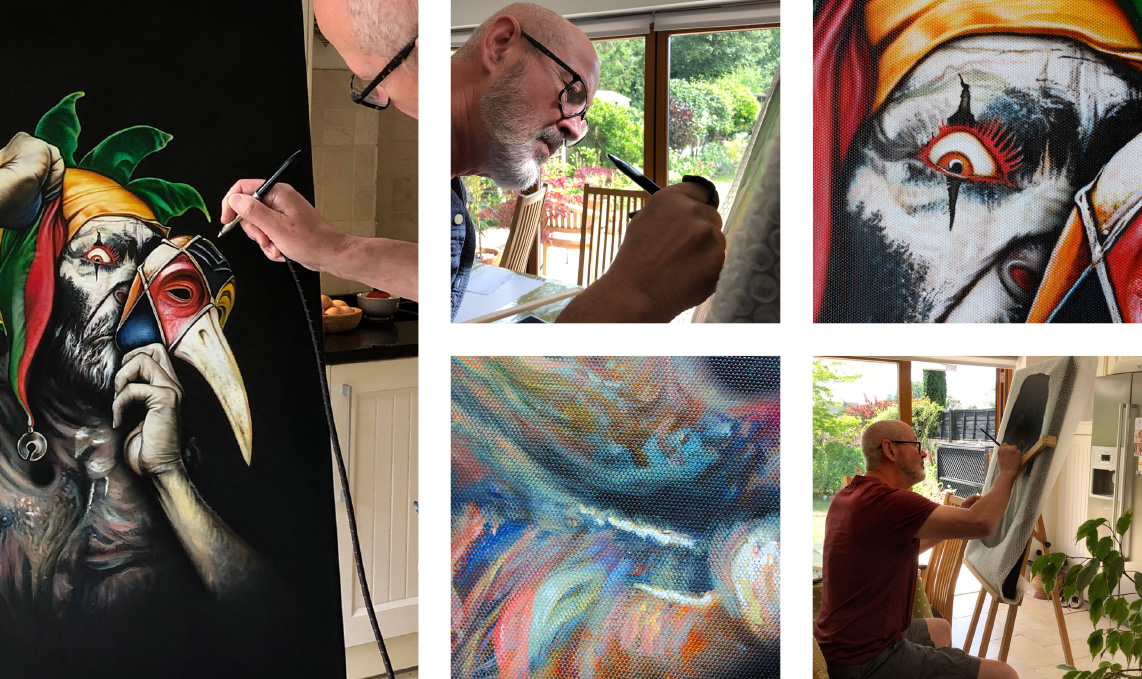
The Masque, 2020 // Thirty eight years after Mark first started working for Marillion, he decided to revisit the jester. This painting was used on the very last page of the special edition book of Fish’s final studio album ‘Weltschmerz’, released before he retired from music. It seemed exactly the right image to use at exactly the right time, revisiting the jester hiding behind a mask. In a world that had been in lockdown for two years due to the Covid pandemic, Mark imagined the jester as he might be in 2020, older, more ragged, hiding behind the bird-like beak ‘plague’ mask. During the 17th century, plague doctors often wore these strange masks filled with sweet-smelling substances (commonly lavender) in an attempt to fend off disease.

Own Your Own // Prints are available to purchase directly from our online shop. They are strictly limited so don't miss out on owning these unique collector's items.
Iron Maiden >
Marillion >
Fish >
Judas Priest >

